Laser Etched Trifold Leather Bag
by tnachtigall in Workshop > Laser Cutting
2638 Views, 14 Favorites, 0 Comments
Laser Etched Trifold Leather Bag
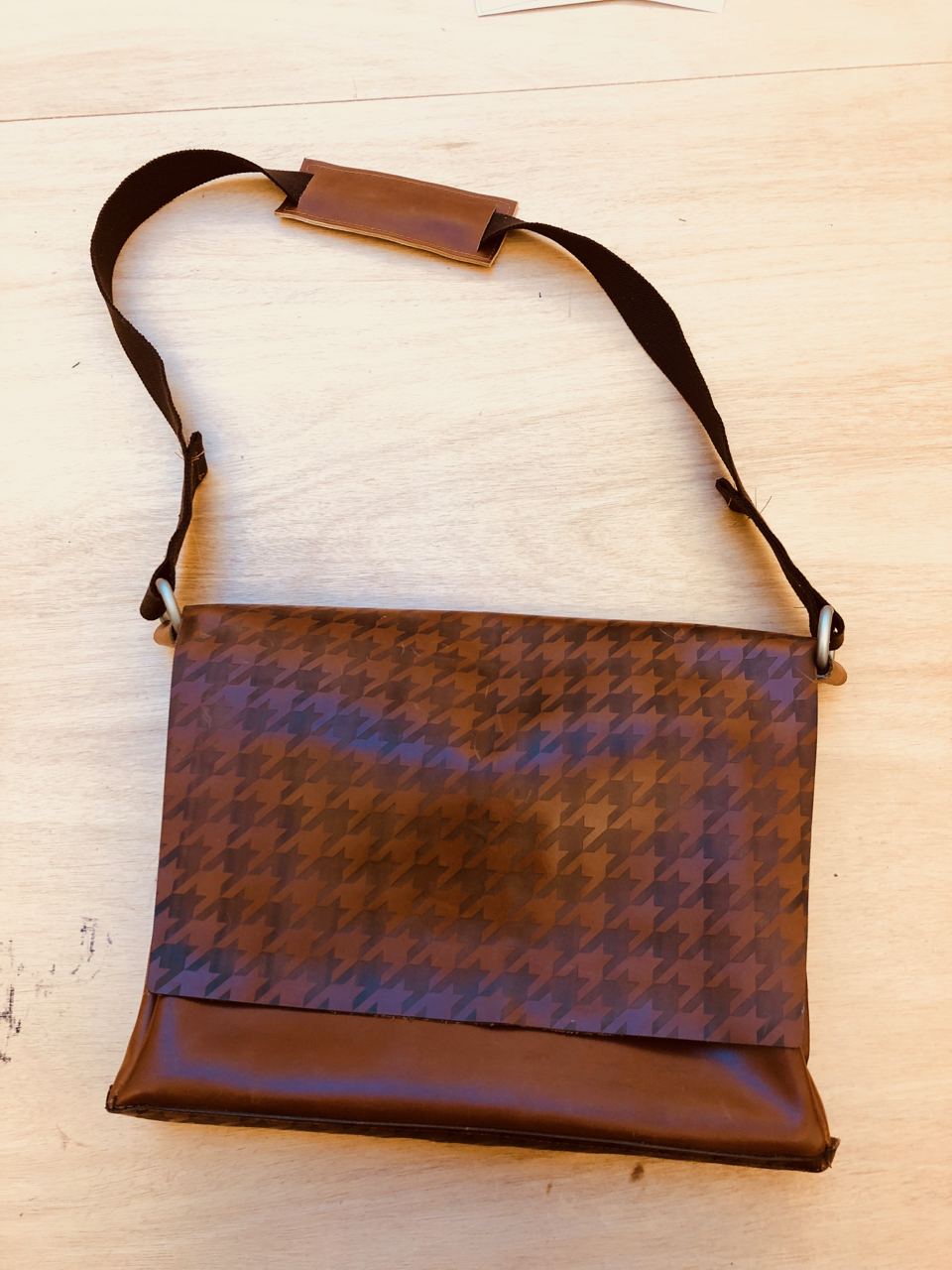
Fashion Designers, especially accessory designers, love to use patterns that repeat. Brands like Gucci, Hermes and Louis Vuitton built their brands upon these patterns. I used Processing to create a sketch that will let you design your own pattern (tessellation) and give you files to need to laser etch/cut your own computer bag.
Ingredients and Preparation
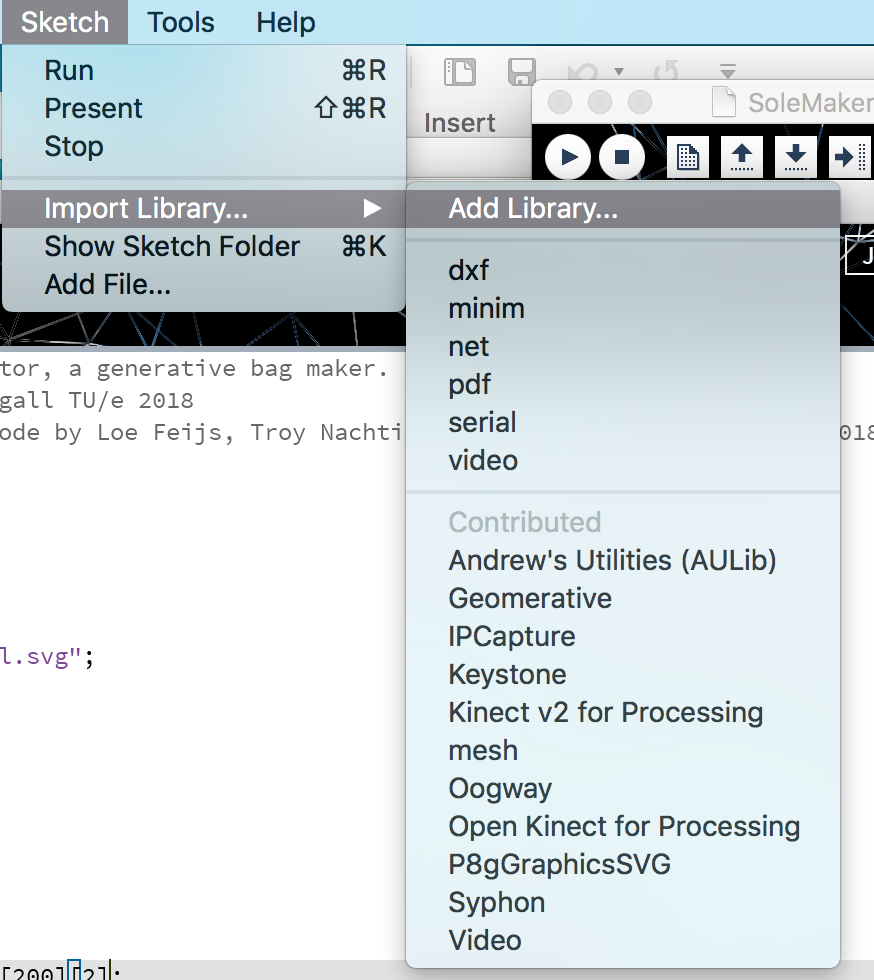
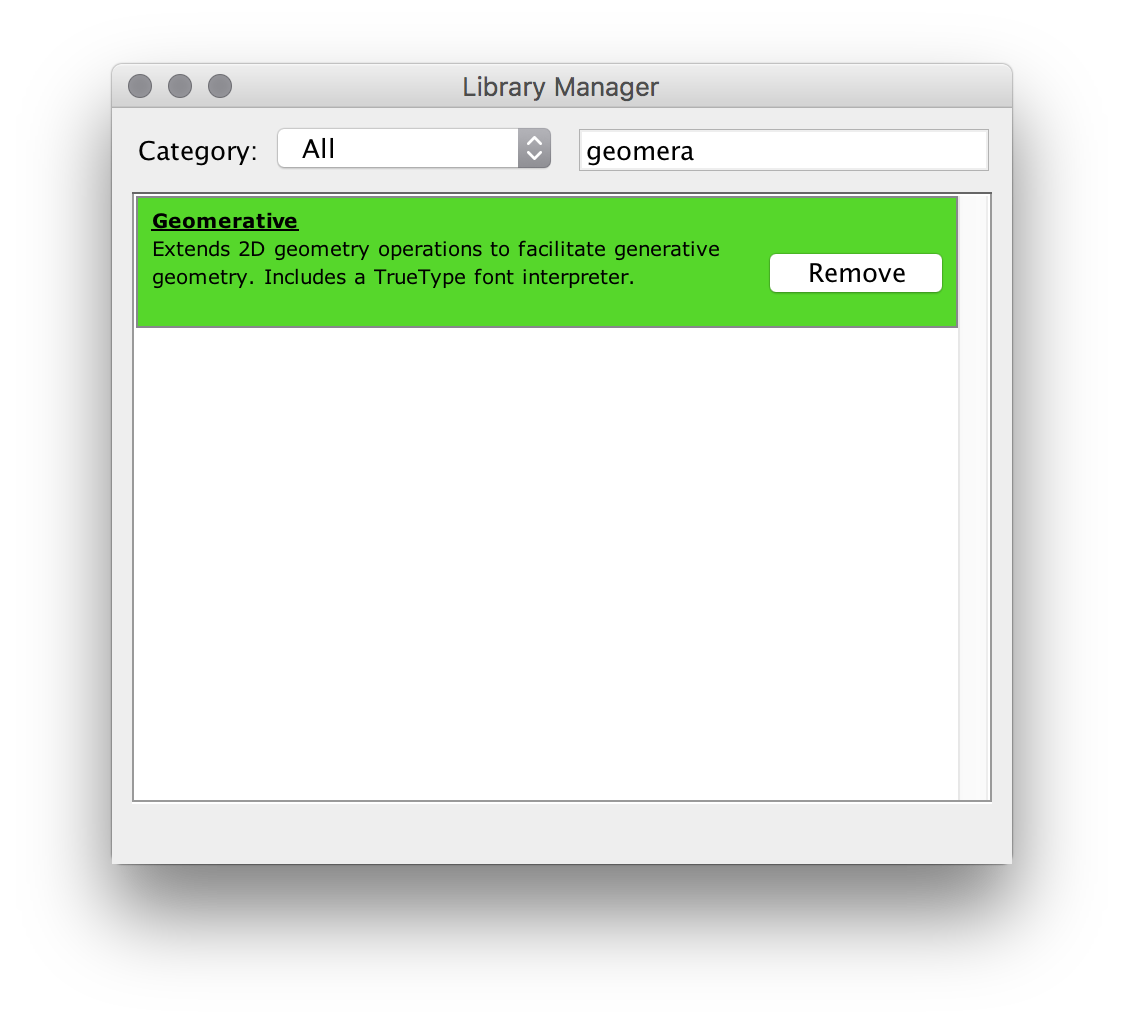
To make your own Computer Bag you'll need Processing, Material, a Laser Cutter and Sewing Machine.
First: Processing andthe Geomerative library.
- Install Processing
- Install the Geomerative library from the Sketch/Import Library/Add Library
- Download my Trifold Tessellator Processing sketch.
Second: Material
- Two panels 70cm x 40 cm (28 in x 16in) of Leather, Denim, or anything that can be Laser Cut/Etched.
- Remember that PU should not be laser cut. Double check your material.
- This is a good time to upcycle an old leather jacket. Just make sure it's leather.
- You will need two metal links (I use carabiners) and 1 meter (3 Feet) of strap.
- Double stick tape
Third: Laser Cutter
- You will need a Laser Cutter that is at least 70cm x 40 cm (28 in x 16in).
Fourth: Sewing Machine.
- Make sure your sewing machine can sew through at least three layers of your material.
Design a Single Tlie

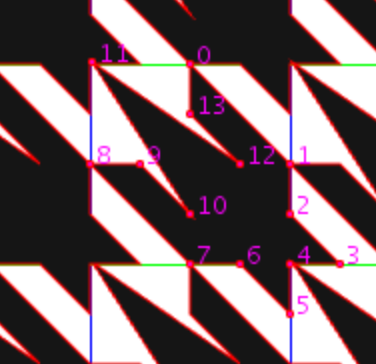
Use the numbered red circled to create your repeated pattern. Adjust the center module slowly, clicking on the lines will add new points. Moving too fast causes several points (This needs fixed at a certain point.).
Changing the Repeat
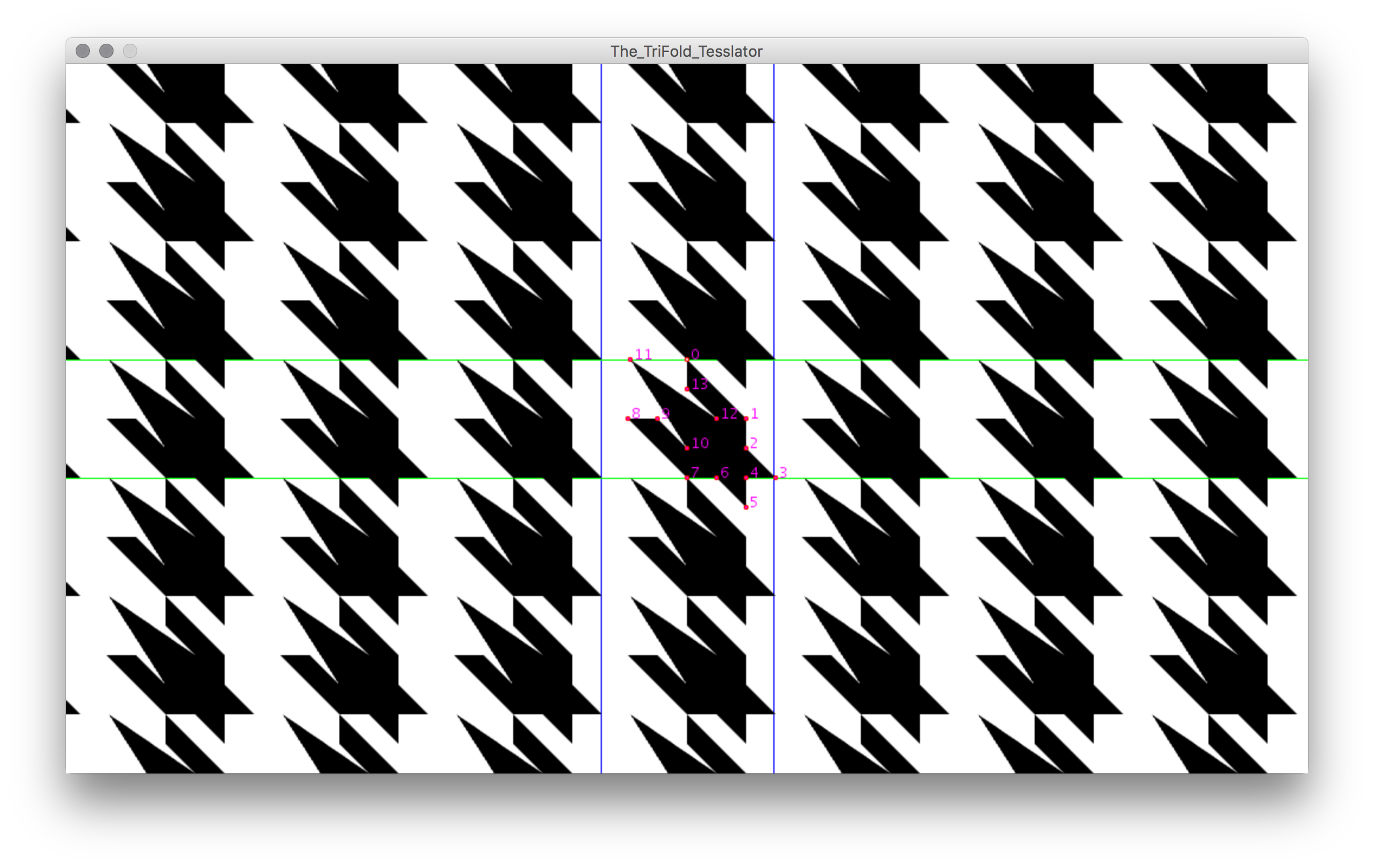
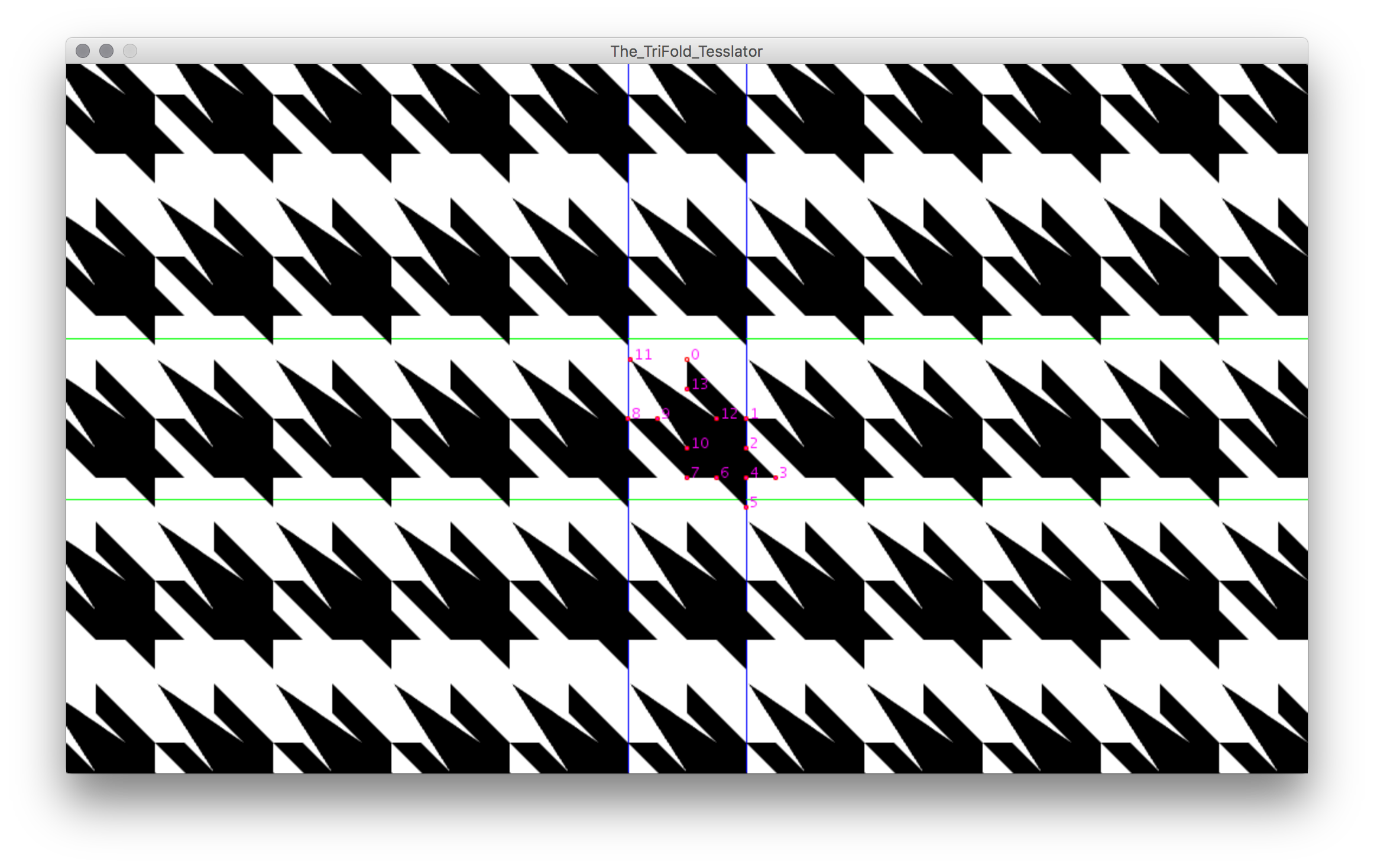
The horizontal repeat can be adjusted using the left and right arrow keys (Blue lines).
The vertical repeat can be adjusted using the up and down arrow keys (Green lines).
Adjust the Incline
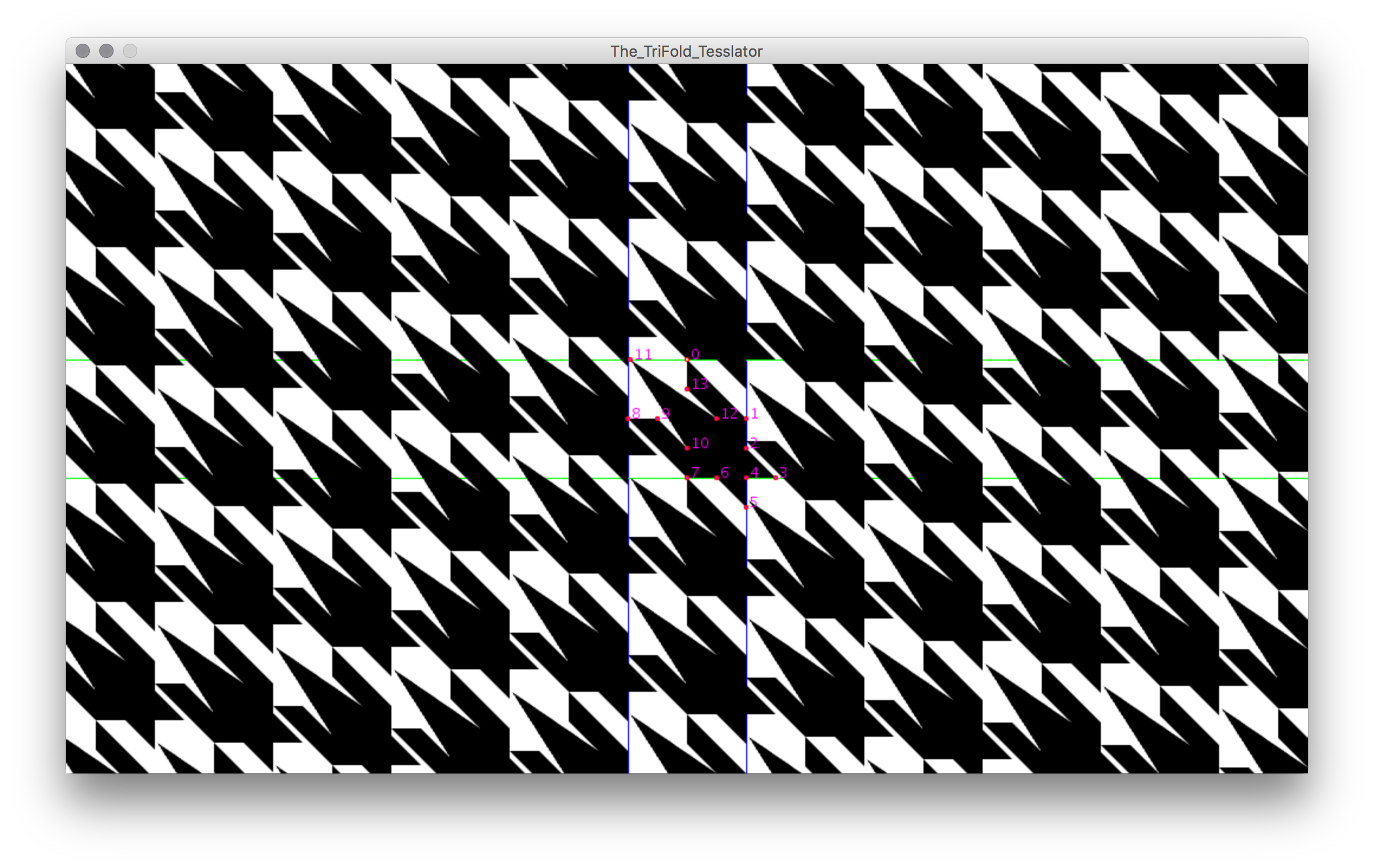
The "," and "." keyboard keys to adjust the incline of the pattern incline.
Size the Pattern to the Bag.
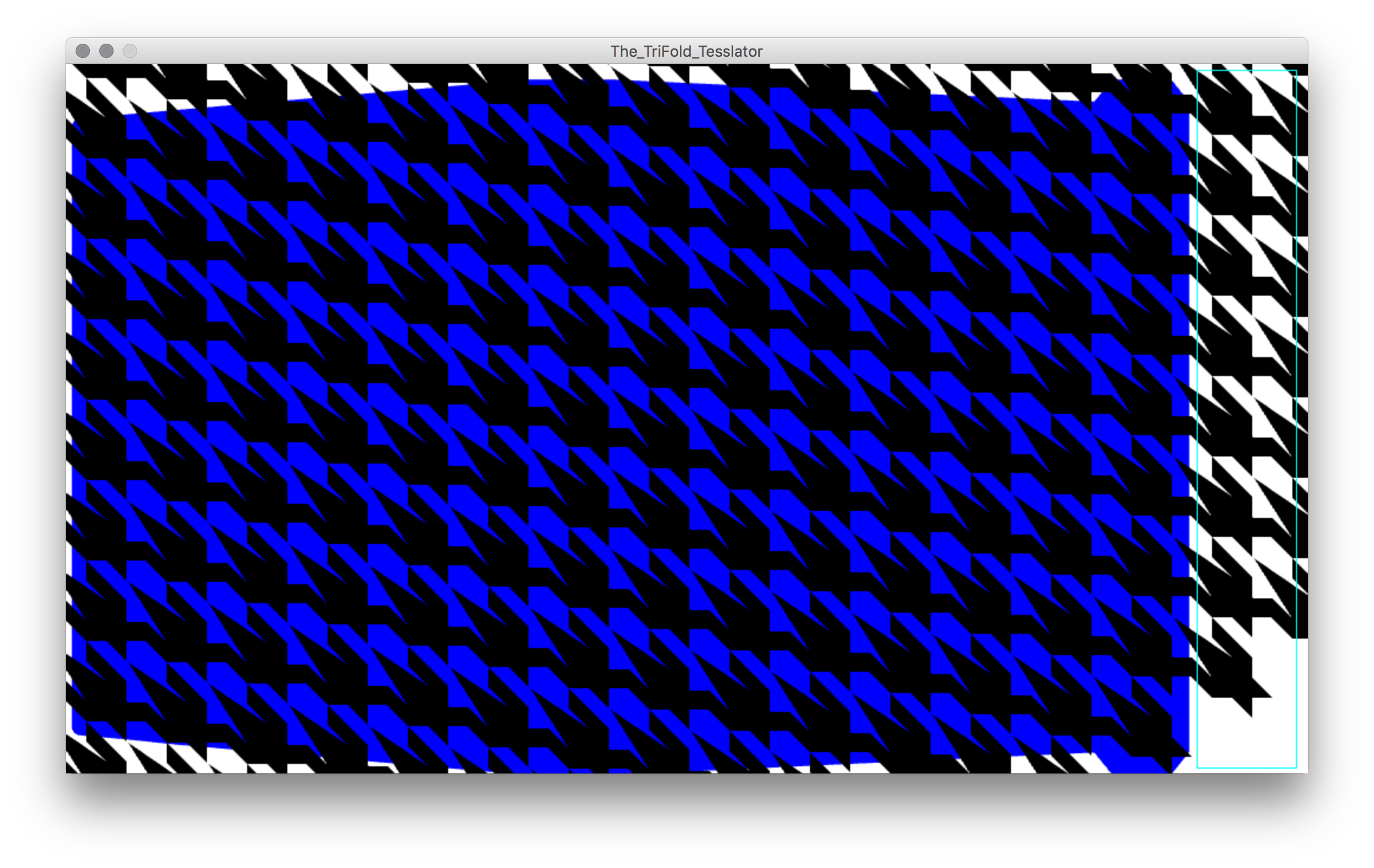
Once the pattern is perfect, it's time to size the pattern to the bag.
- Press "S" to make the pattern smaller
- Press "L" to make the pattern larger
Press the keys one at a time, holding the keys down will crash the program.
Make the Laser Cutting PDF
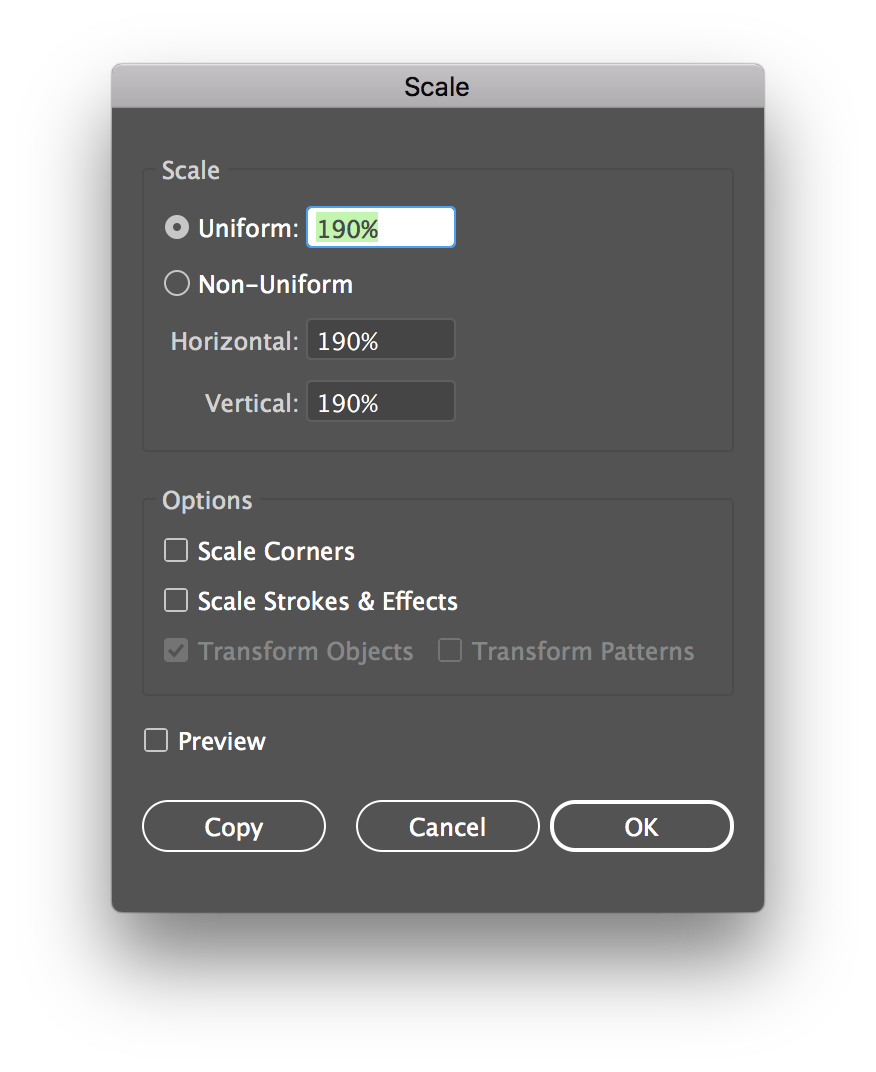
Pressing "P" will save the file as a pdf, ie. FrontPanel0267.pdf, in the Processing folder.
The file needs to be scaled up 190% in your laser software or on Illustrator/Inkscape. (To be fixed.)
You will also need to cut the Trifold Back and Pockets.pdf in the Processing Folder.
Material
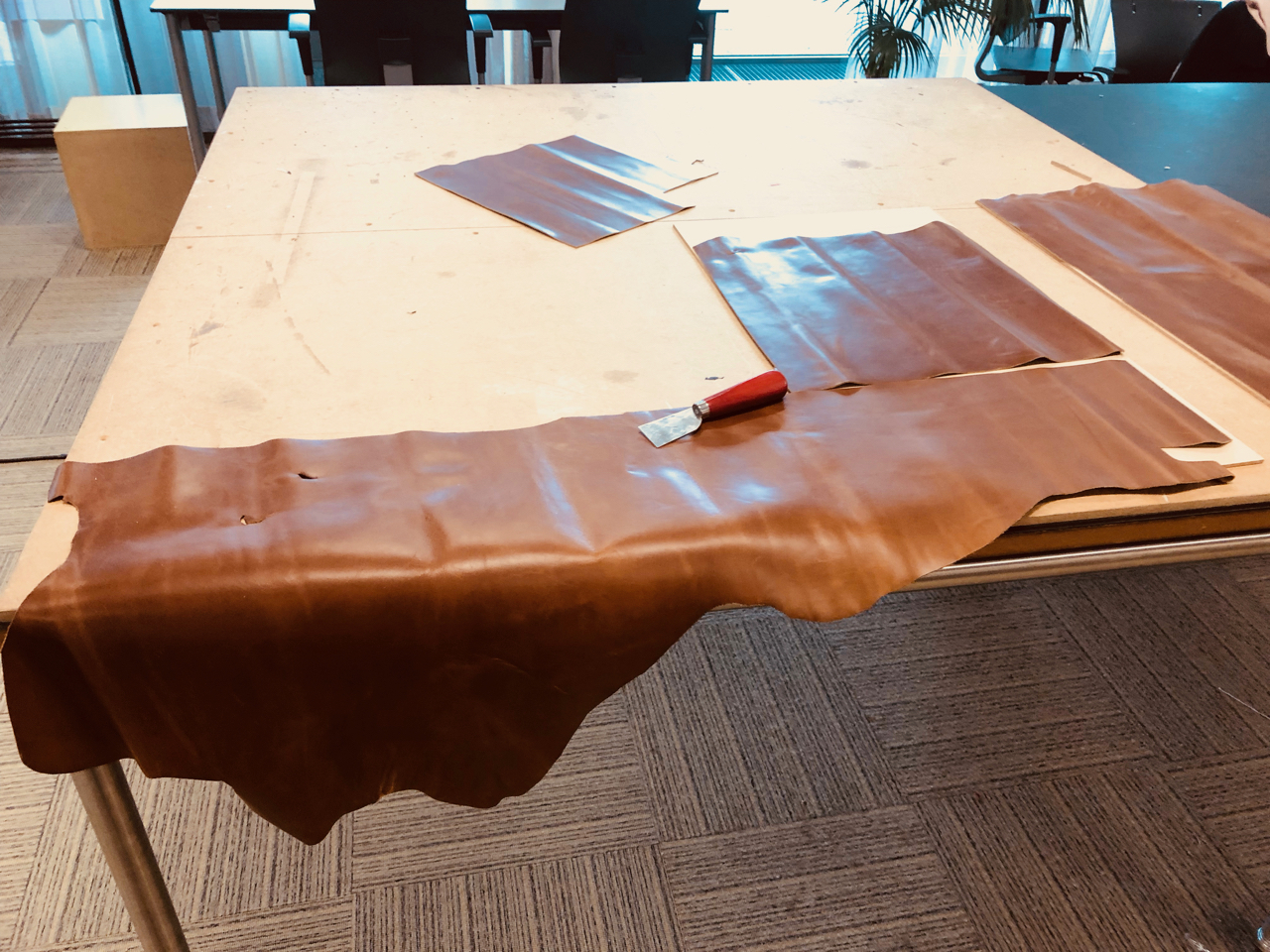
Cut two panels 70cm x 40 cm (28 in x 16in) of Leather, Denim, or anything that can be Laser Cut/Etched.
- Remember that PU should not be laser cut. Double check your material.
- This is a good time to upcycle an old leather jacket. Just make sure it's leather.
(I use mdf boards as a base. I sometimes etch outlines of what I am cutting so I have a good idea of where the design will fall on the material.)
Flatten Your Material
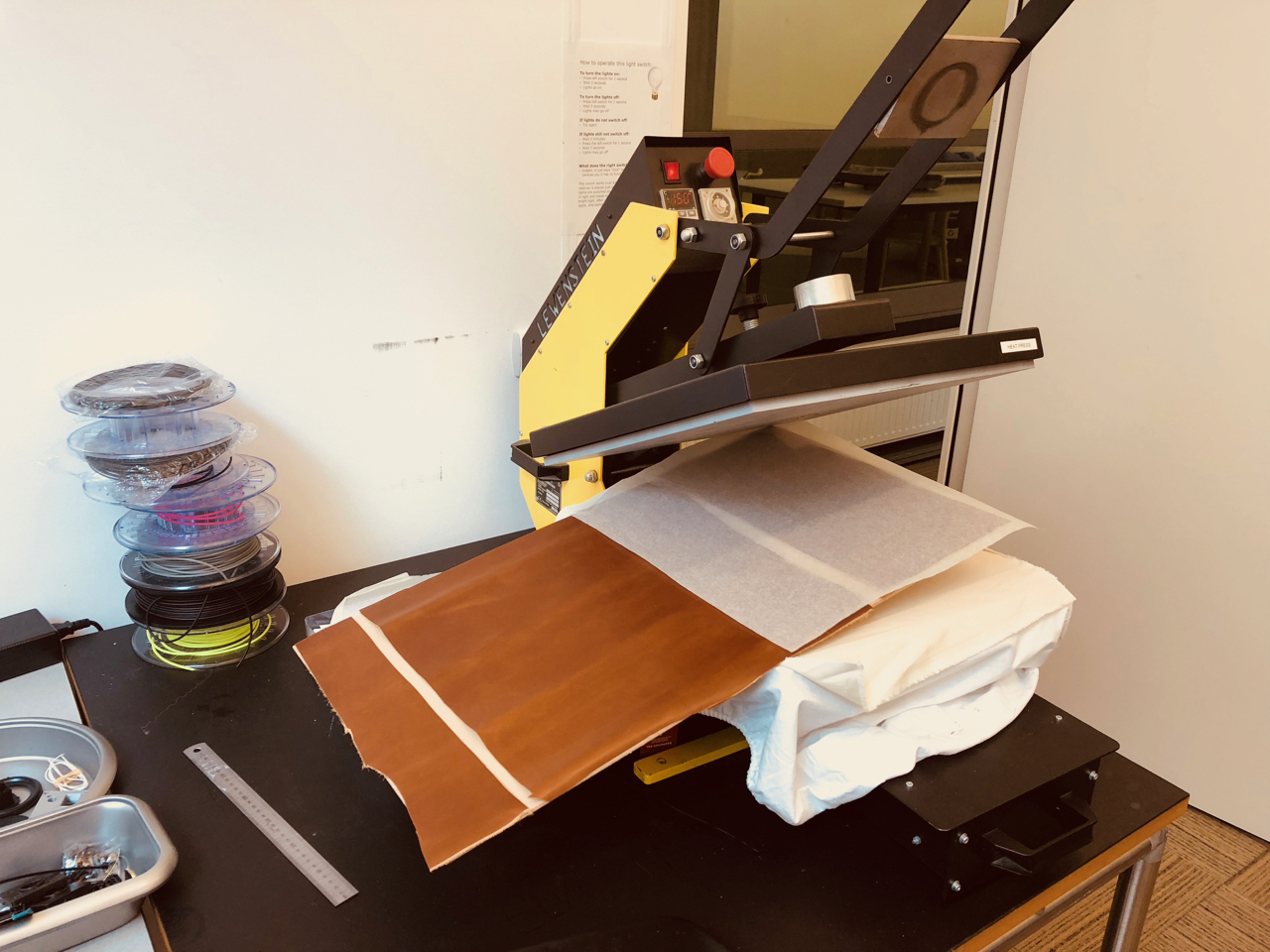
Laser etching requires VERY flat material. (small variances in the surface cause the laser to burn differently.)
- Press the material flat with an iron or tshirt press
- Place the material between two boards and place a heavy book on top
I do both.
Laser Etch and Cut Your Pieces
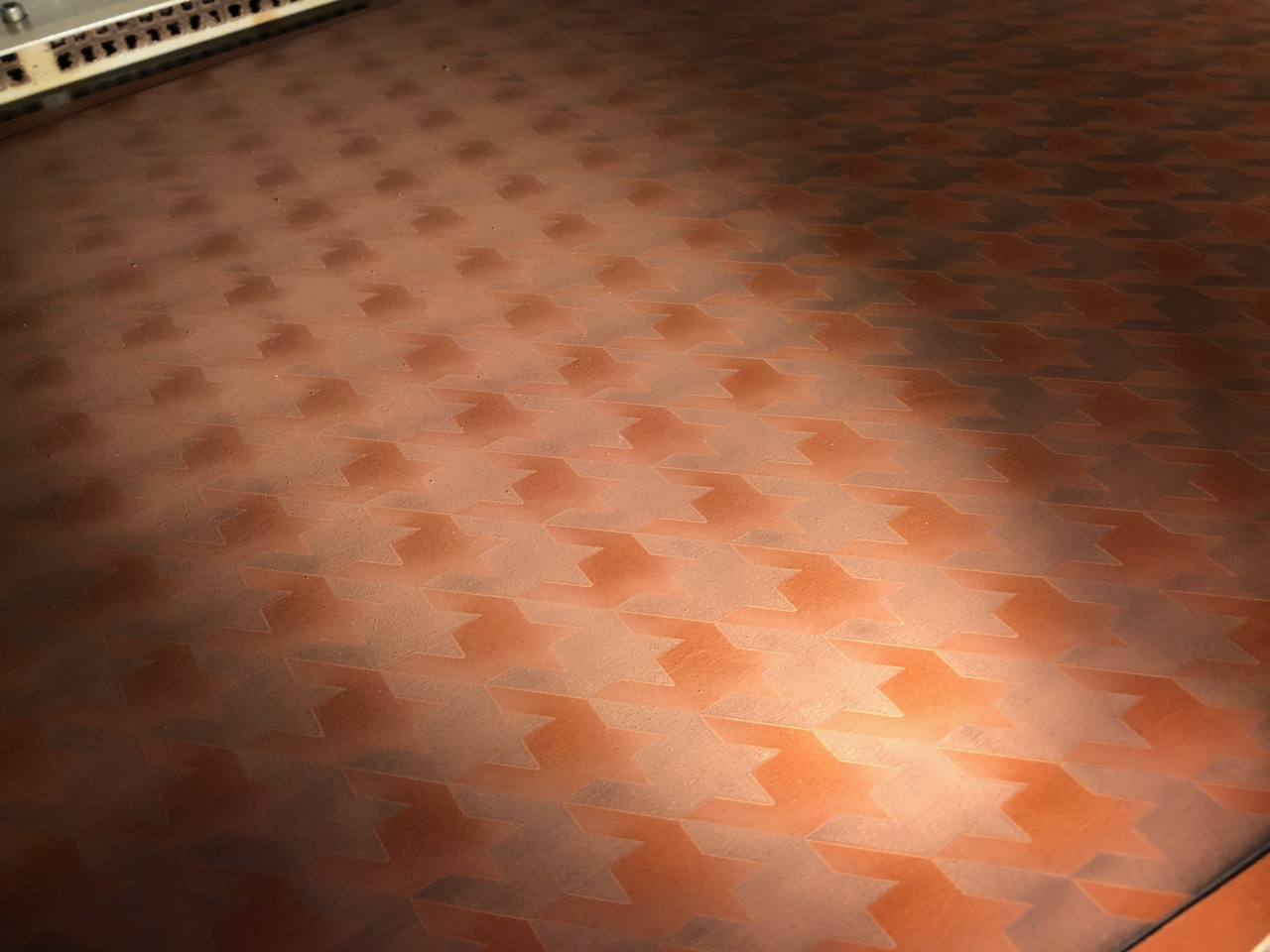
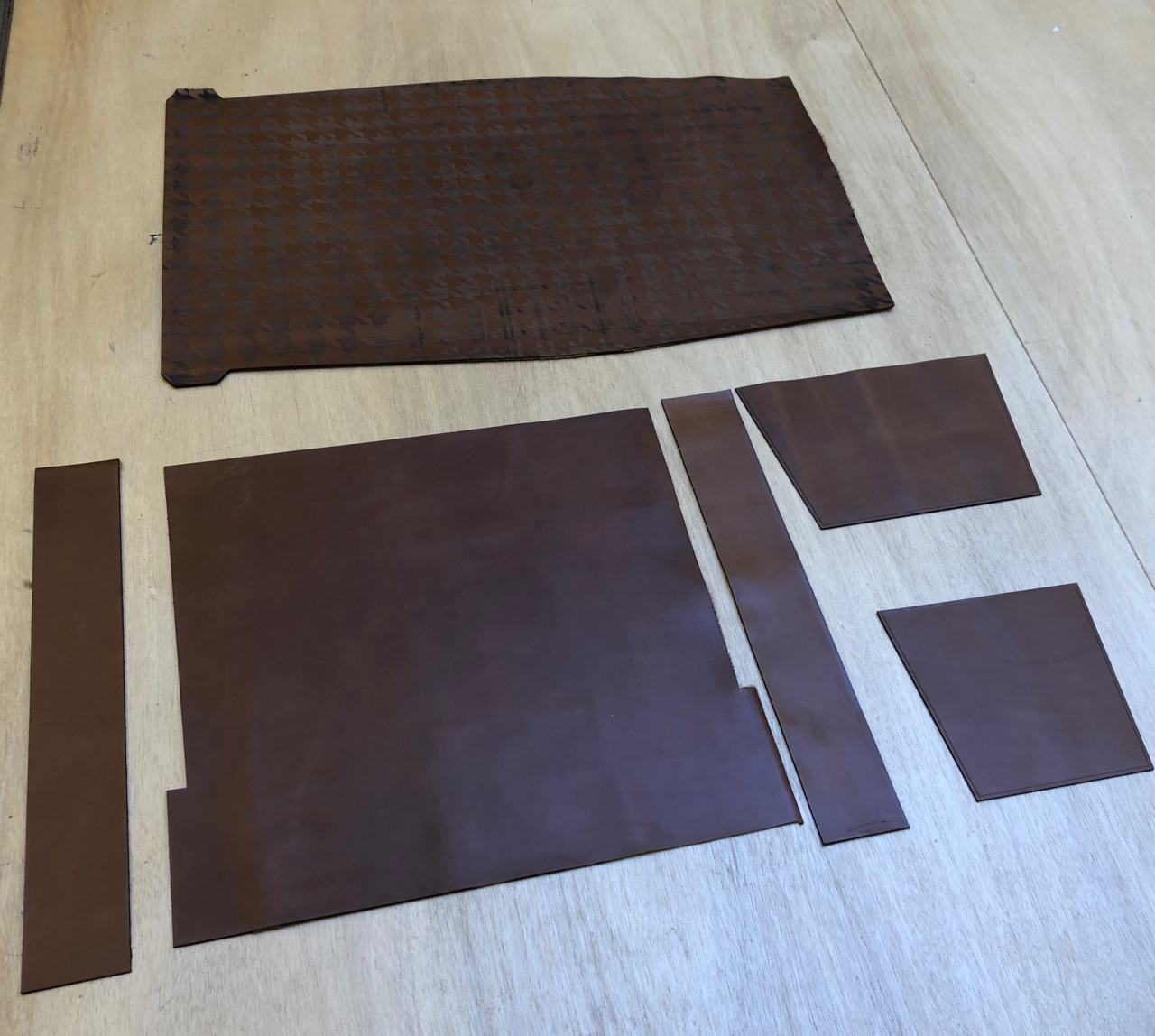
It's time to Laser!
- The blue lines are cut lines.
- The red lines are vector etch lines.
- The black is raster engraving.
I use 30% engrave with a 30W laser. The depth of the laser depends on the material and material thickness.
Wipe the Leather
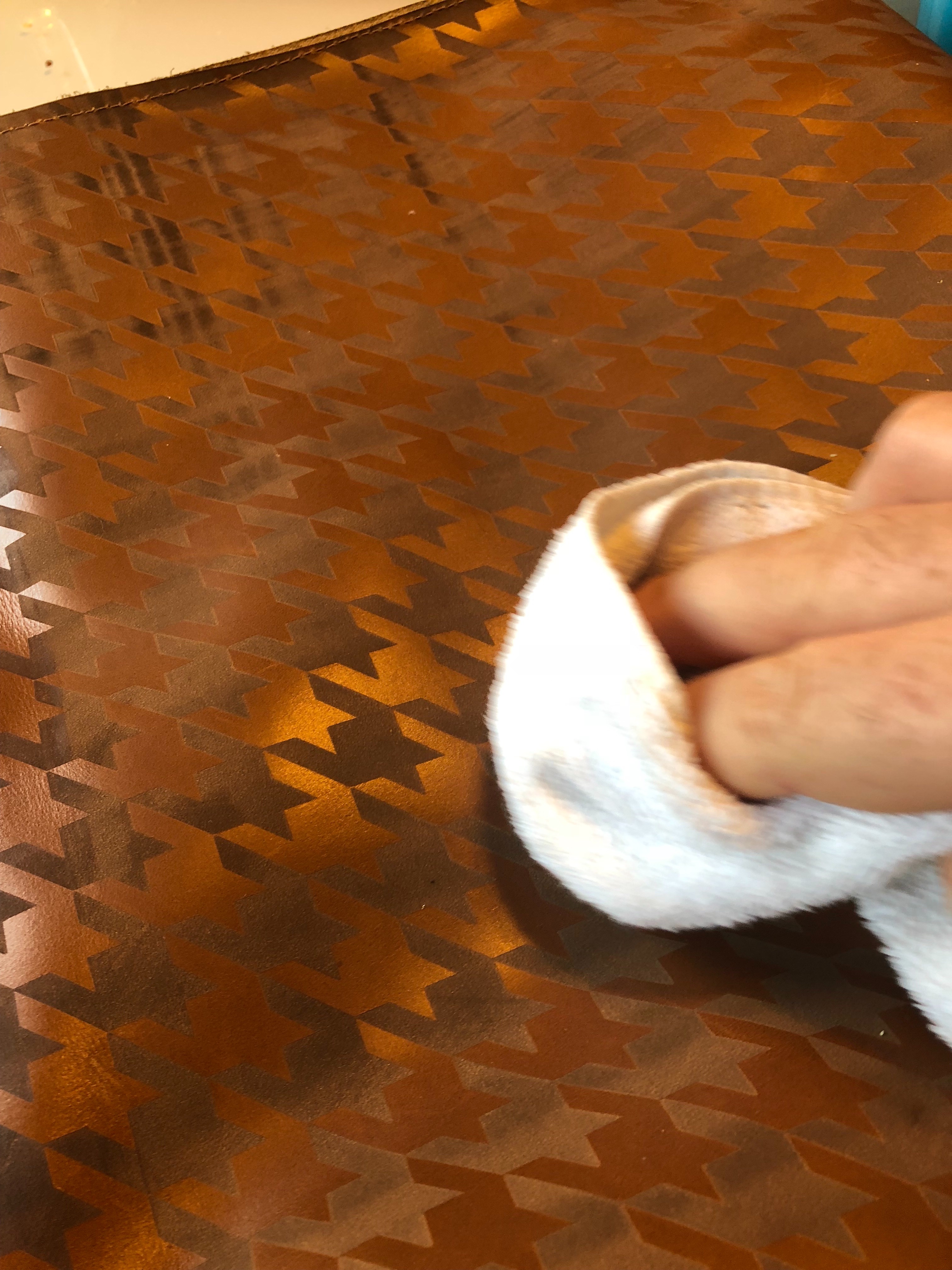
- If you are using leather or similar, you will want to wipe the burnt leather off with a damp cloth.
- If the smell is too much, place the leather in box, dust it with baking soda, leave it covered over night.
Sew the Pockets
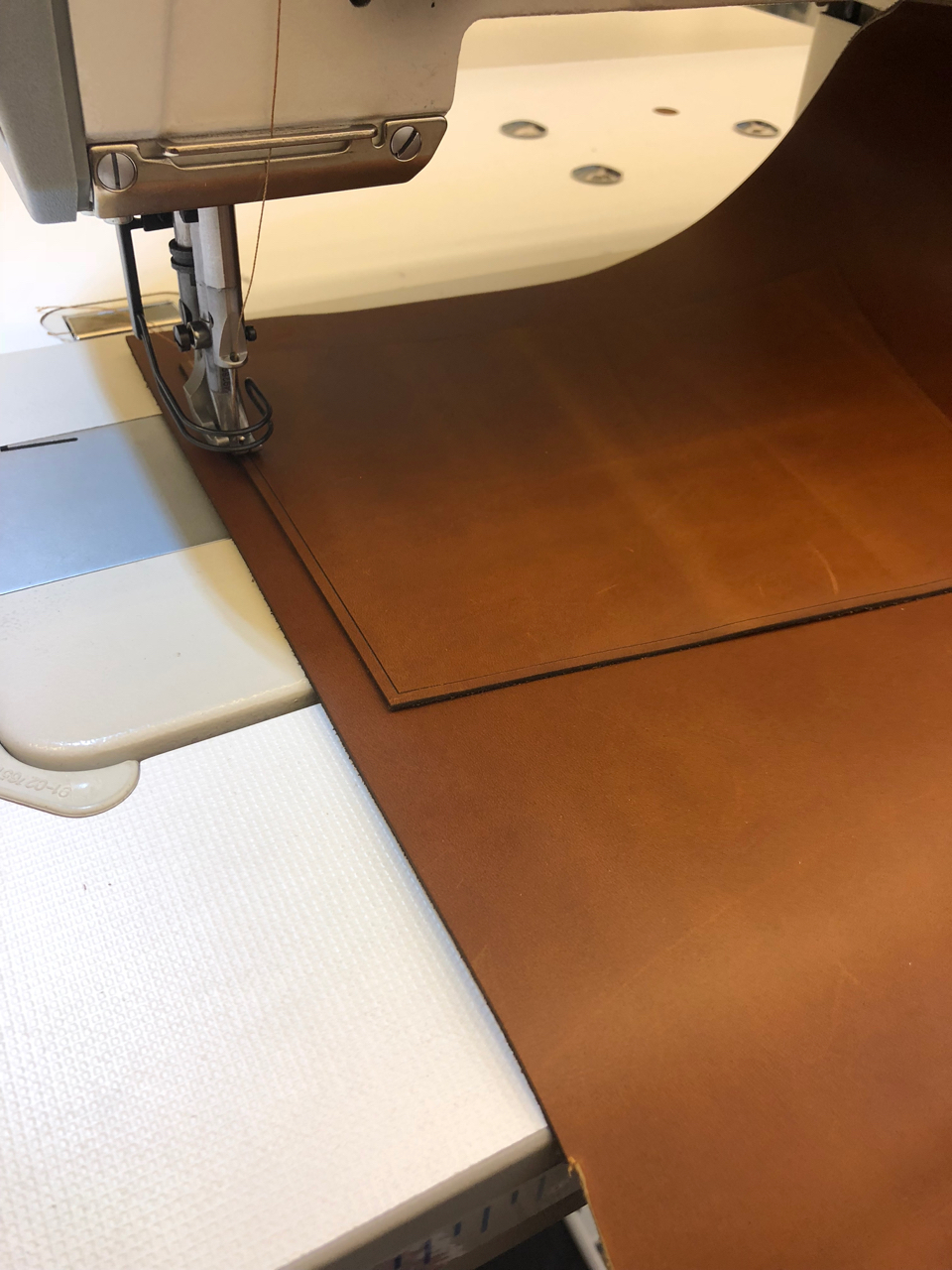
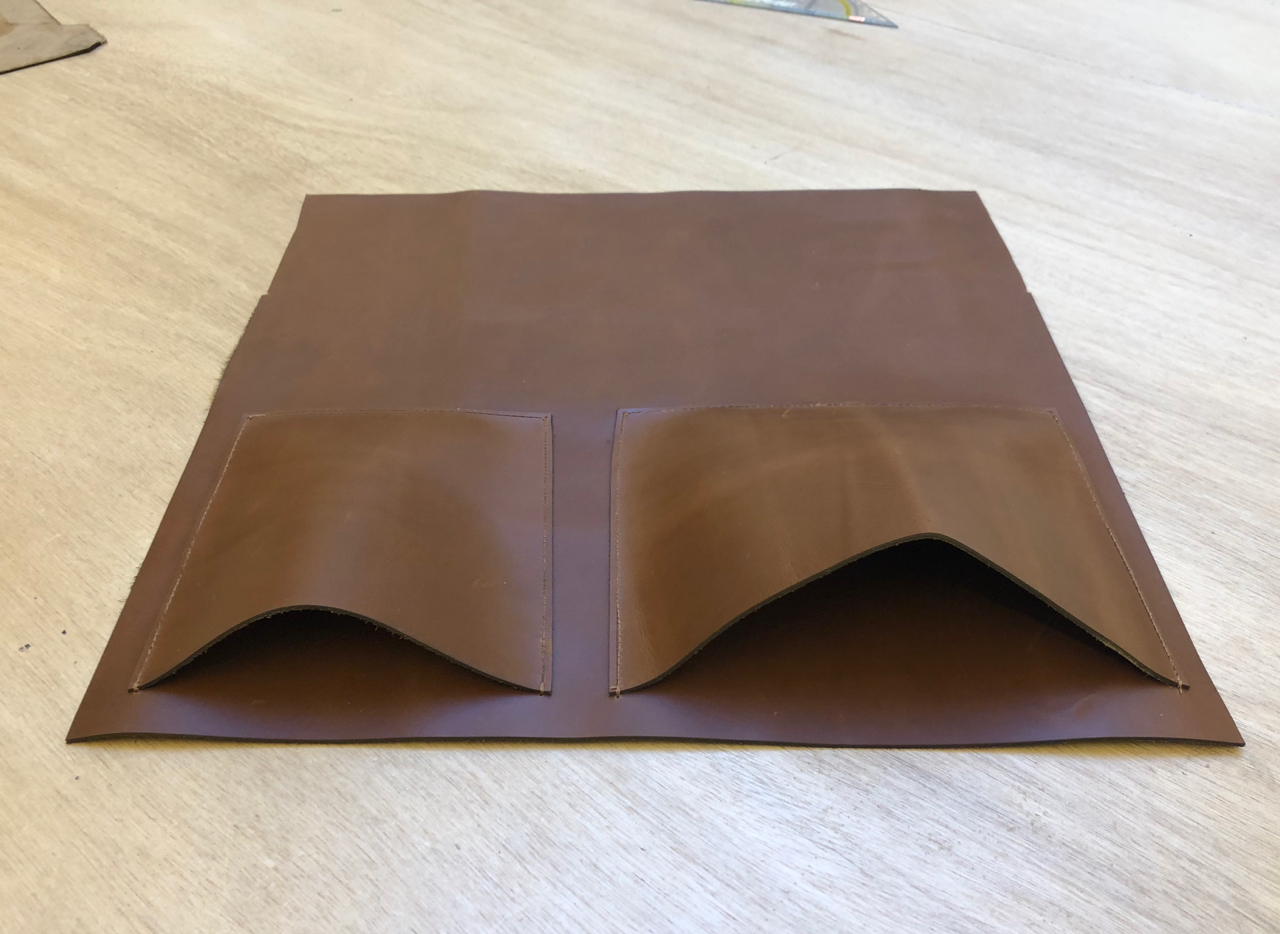
The pockets are sewn on the lines of the pockets. Be sure to backstitch as this is bag for heavy things.
- The pocket tops are larger so that the pockets hang open and have space for stuff.
Guidelines for Attaching.
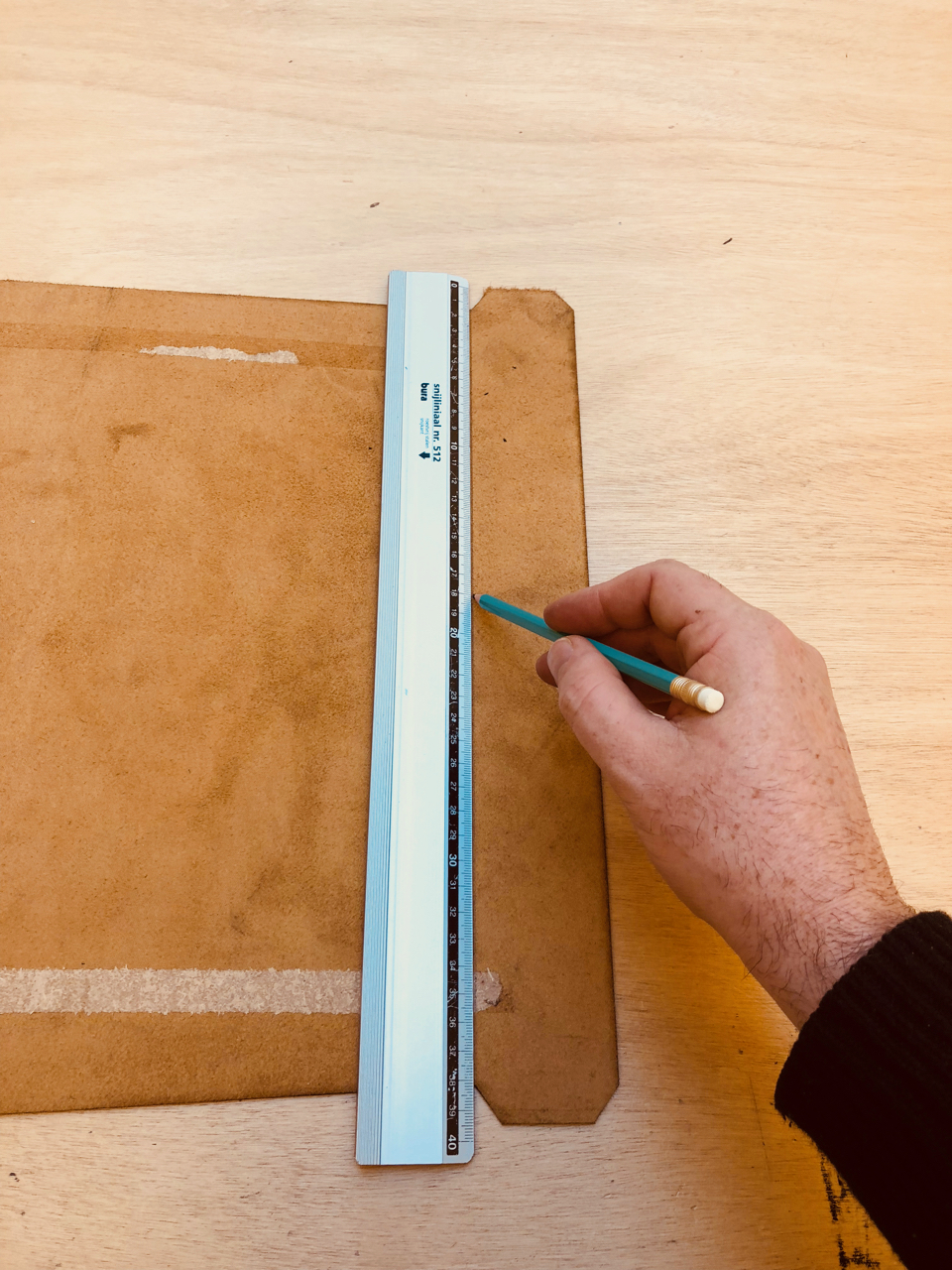
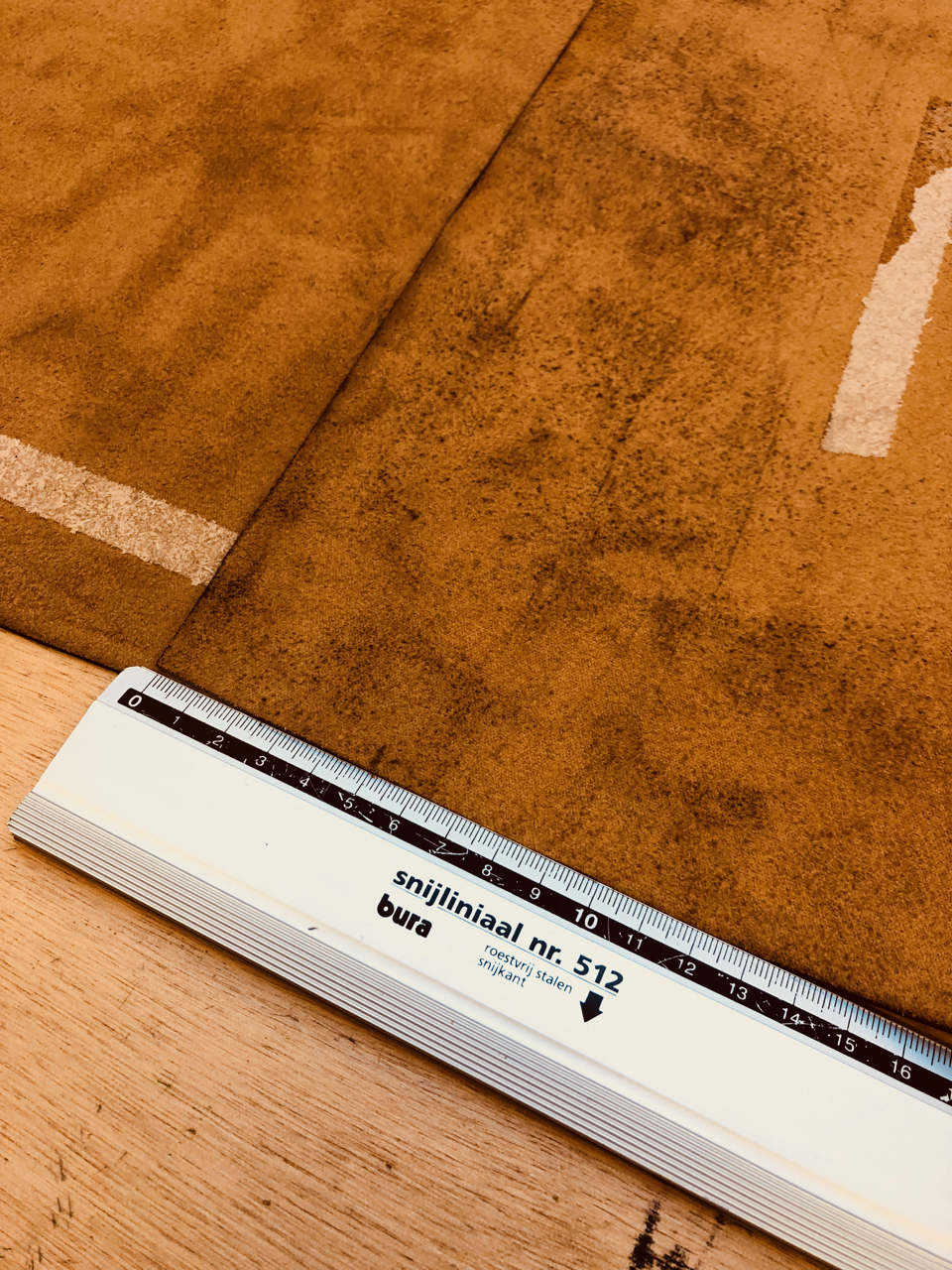
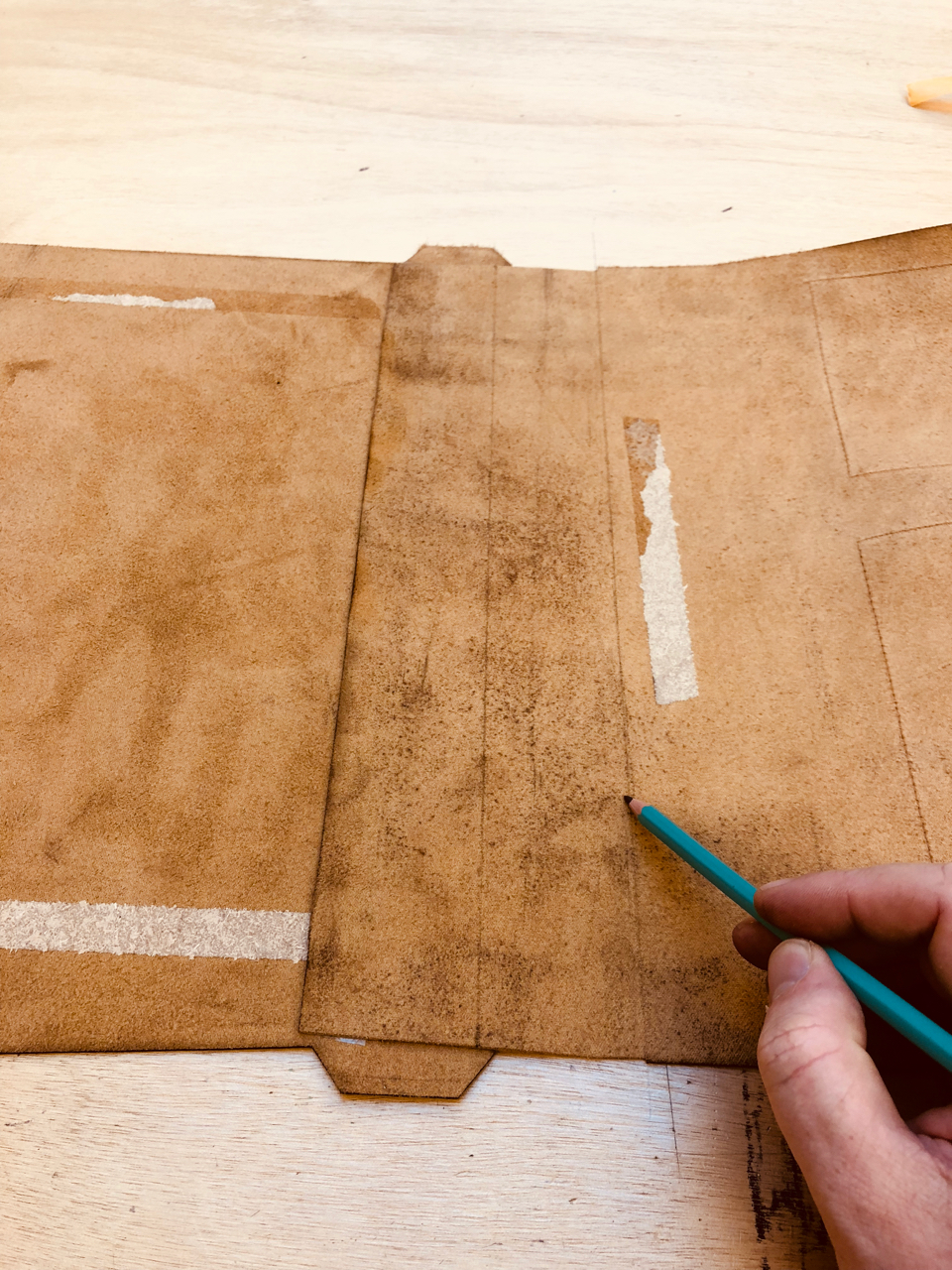
There is a trick when attaching the outside and the inside panels of the Trifold bag. Leaving a fold of leather (or other material) in the bottom of the bag helps from damaging your laptop when you put it down.
- On the backside of the material, mark the sew lines.
- This is where the tabs start and stop on the trifold panels
Add Some Double Stick Tape or Leather Glue
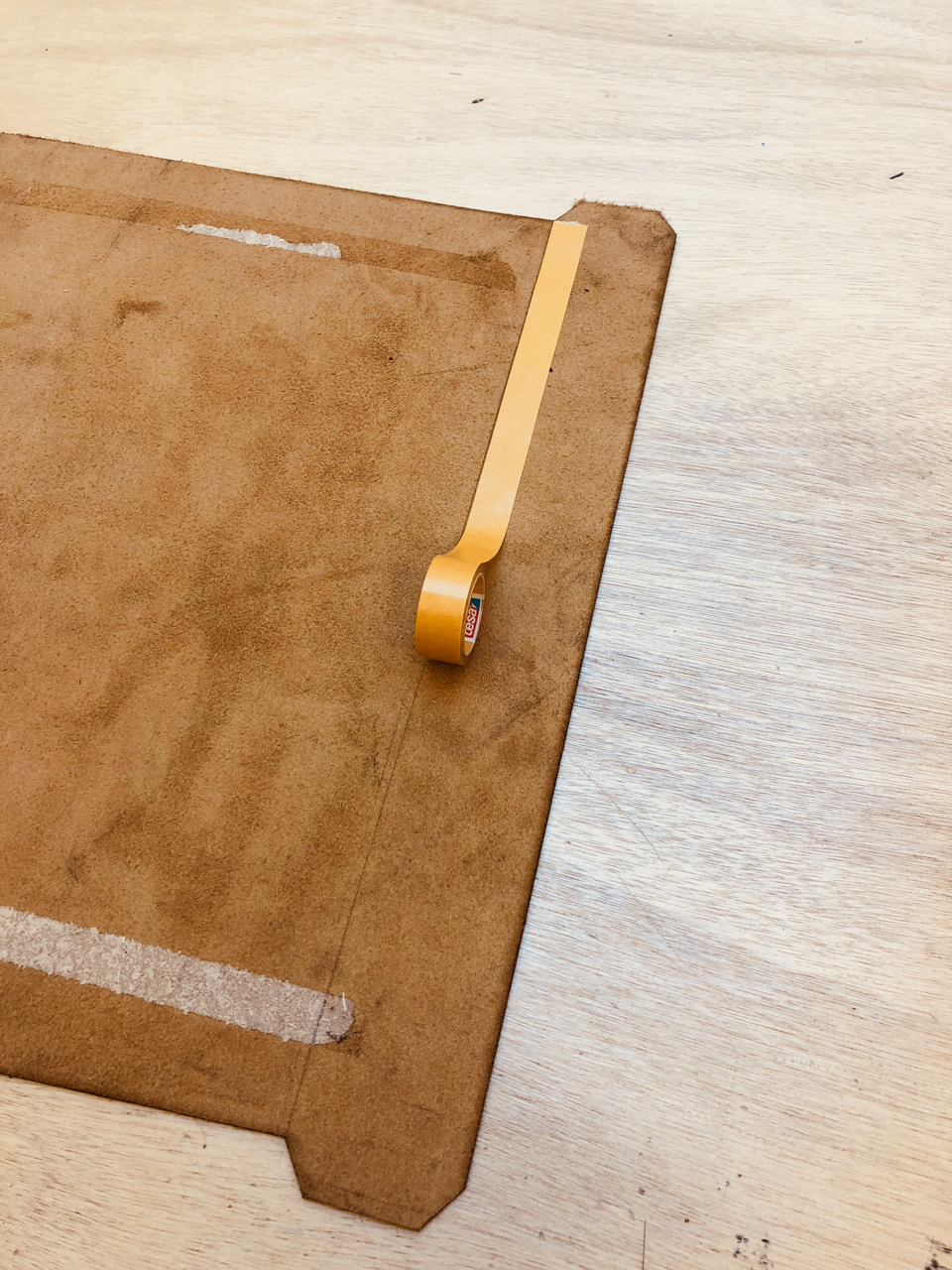
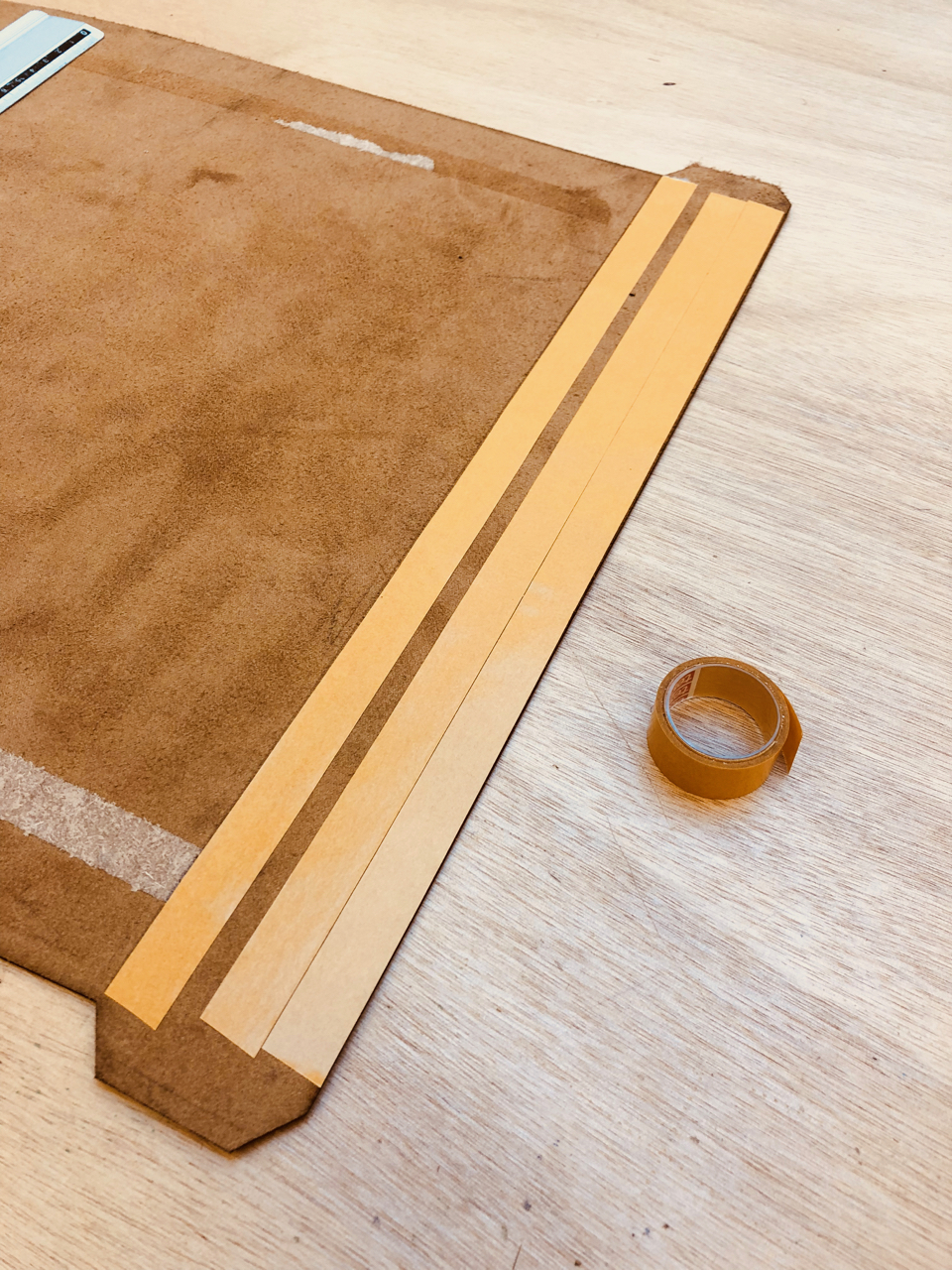
Keeping the inside panel attached while stitching insures that it will come together well.
- add tape to the bottom part of the outside panel.
Attach the Outside Panel to the Inside Panel.
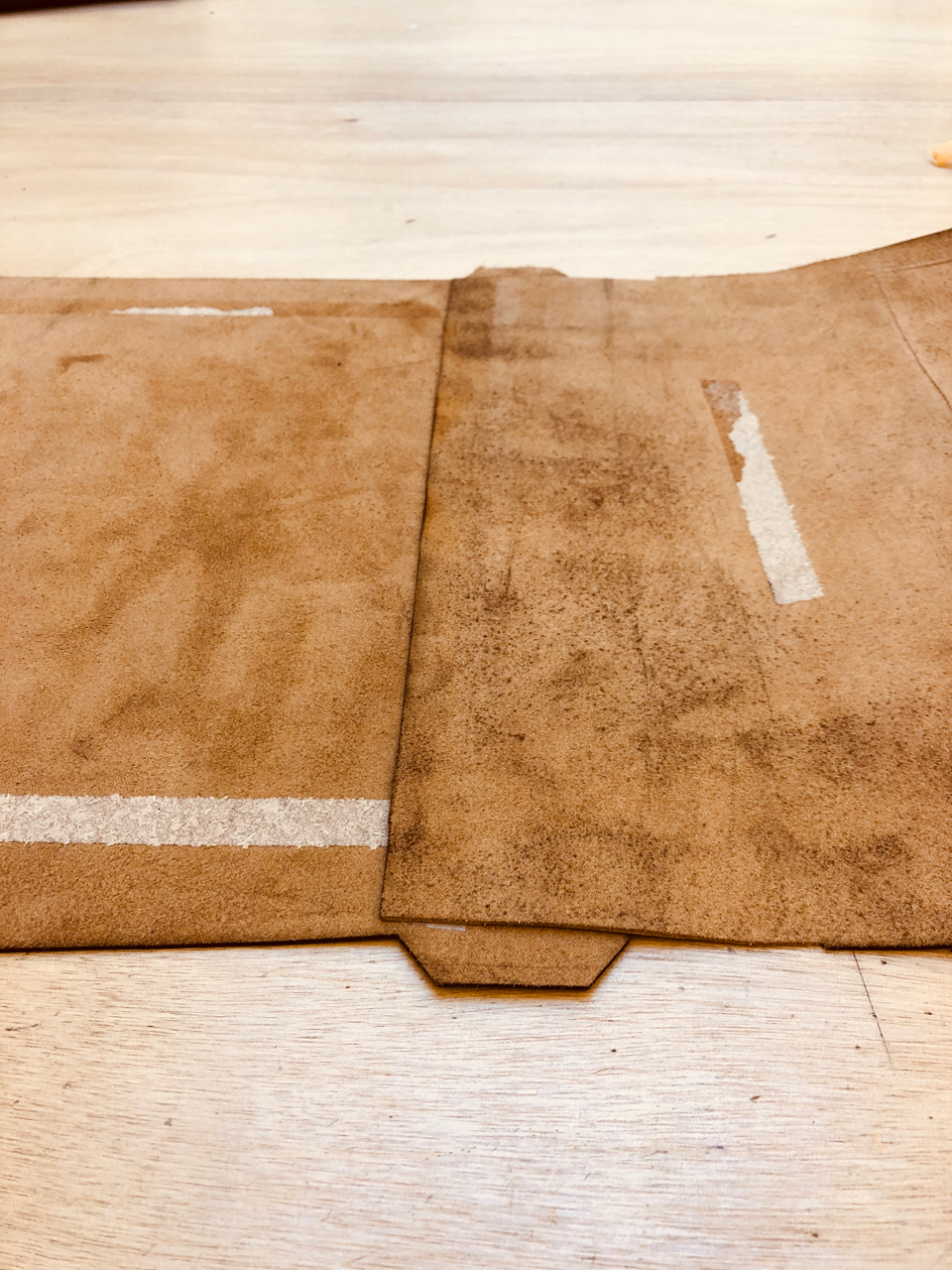
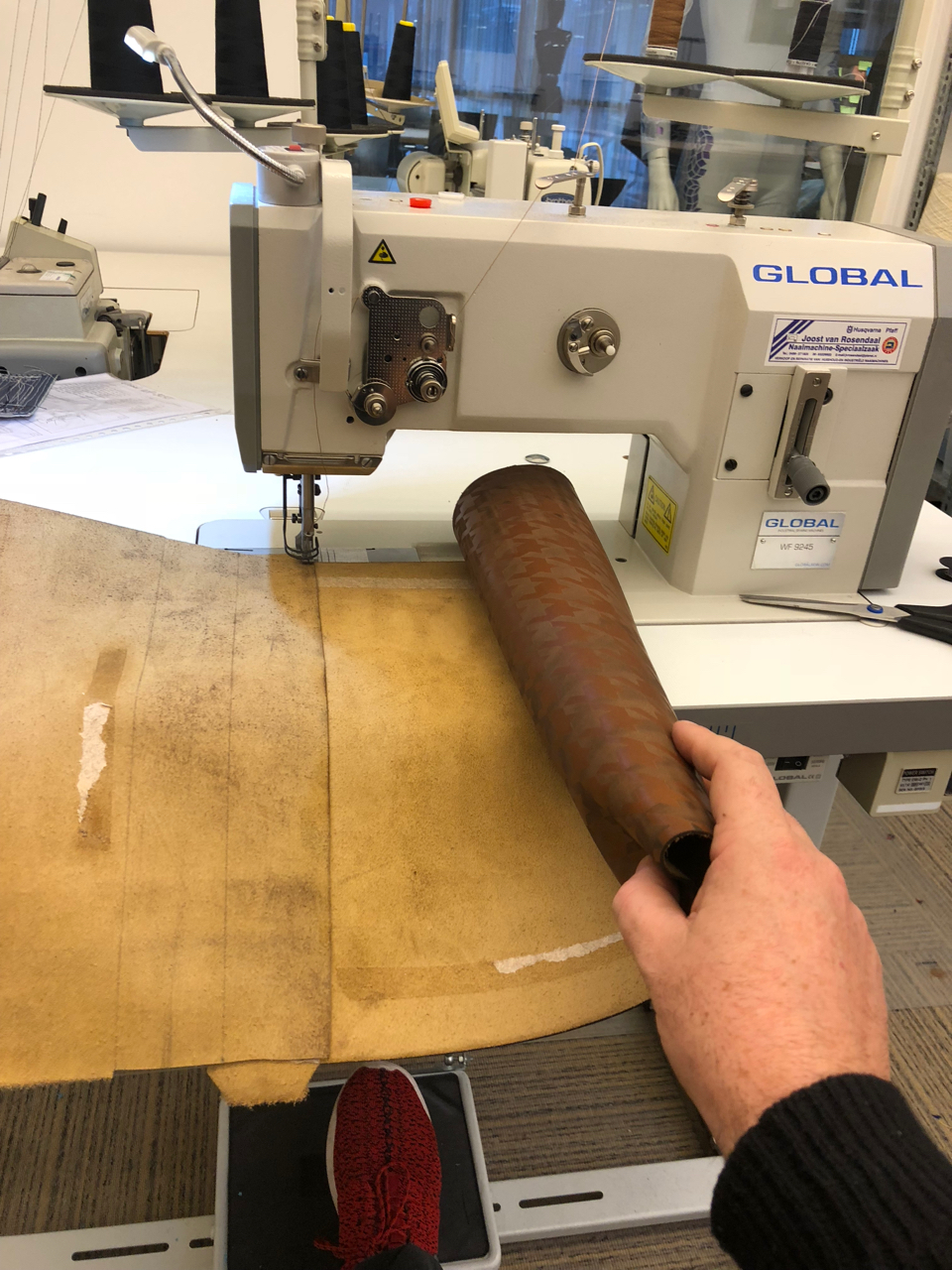
- Remove the back side of the double sided tape.
- Position the inside flap 3mm (1/8in) over the line and tape.
- Roll the inside up to manage the material that passes under the sewing machine arm.
- Sew directly over the base line we drew before. 3mm (1/8th in) or the edge of the pressure foot in from the edge of the inside panel.
(There is leftover double stick tape on the back of my leather from laser cutting. This is not needed if you press and leave boards on your leather.)
The Bottom Bump
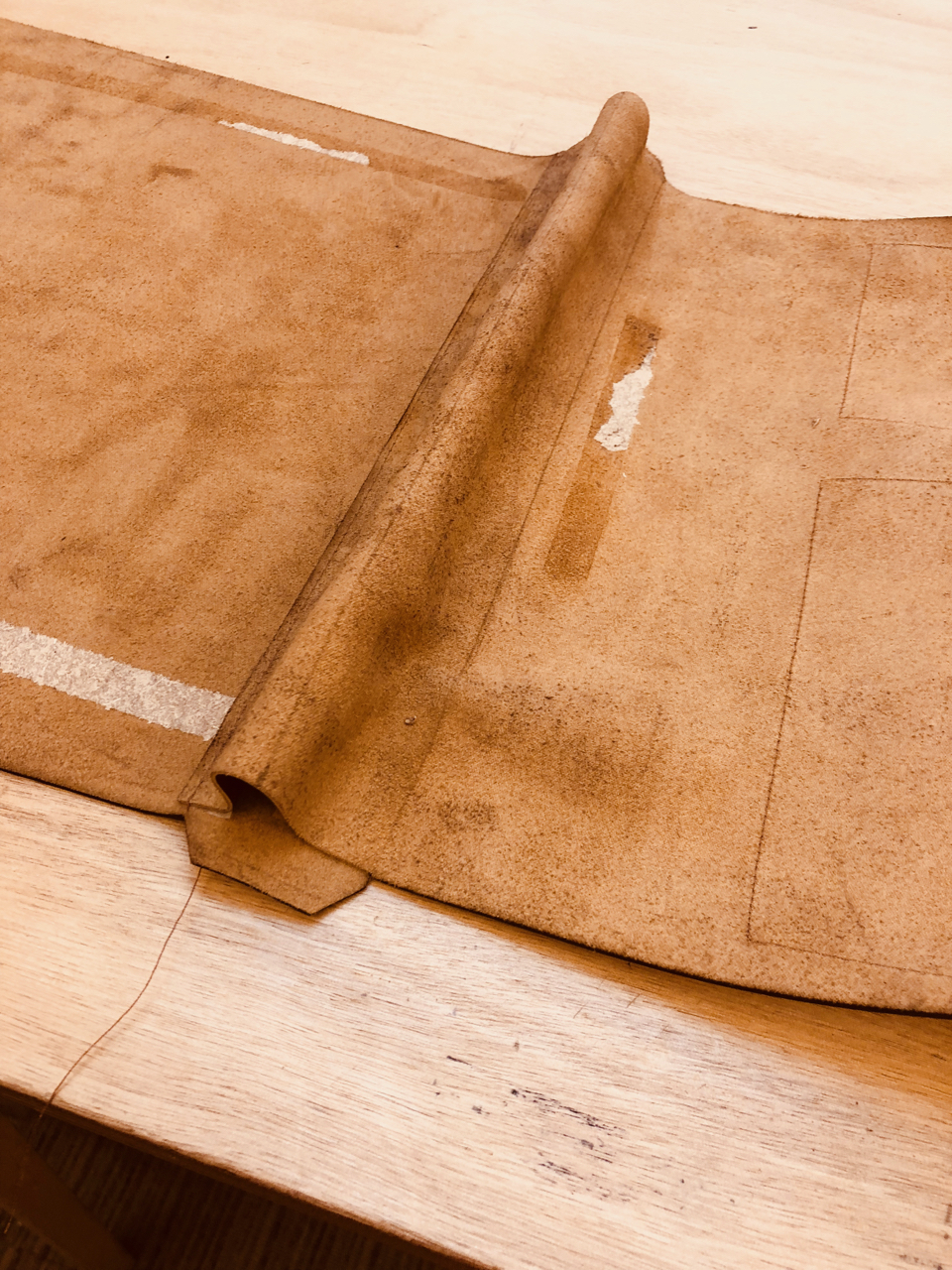

Adding a bump in the bottom will help protect you laptop when you sit your bag down.
- Remove the rest of the double stick tape
- make a bump by sticking the leather on the guideline drawn earlier. you can feel the bump of the outside panel.
- Stitch the leather 3mm (1/8 in) or the width of the pressure foot on the left (bottom) side of the trifold.
Double Check
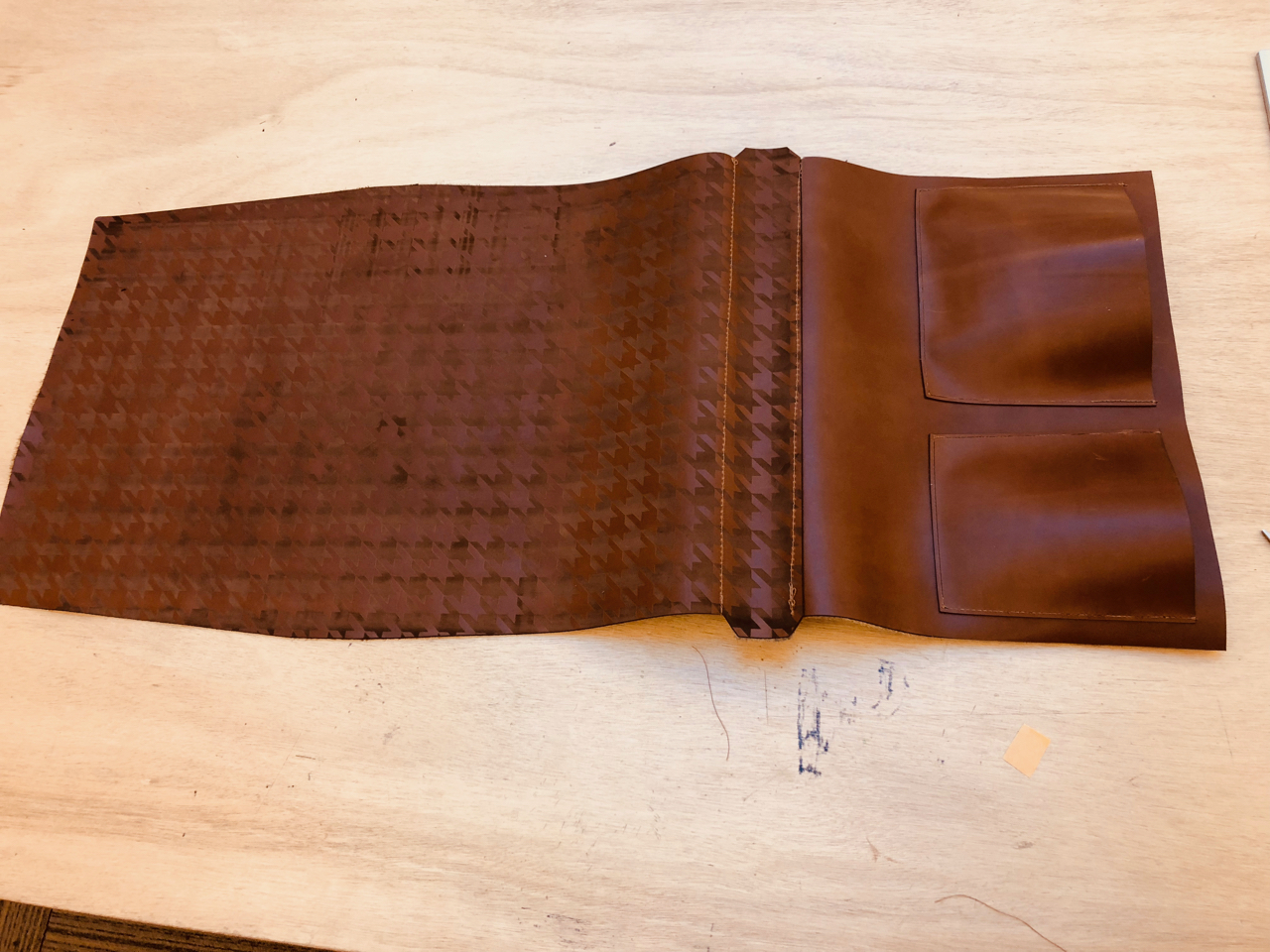
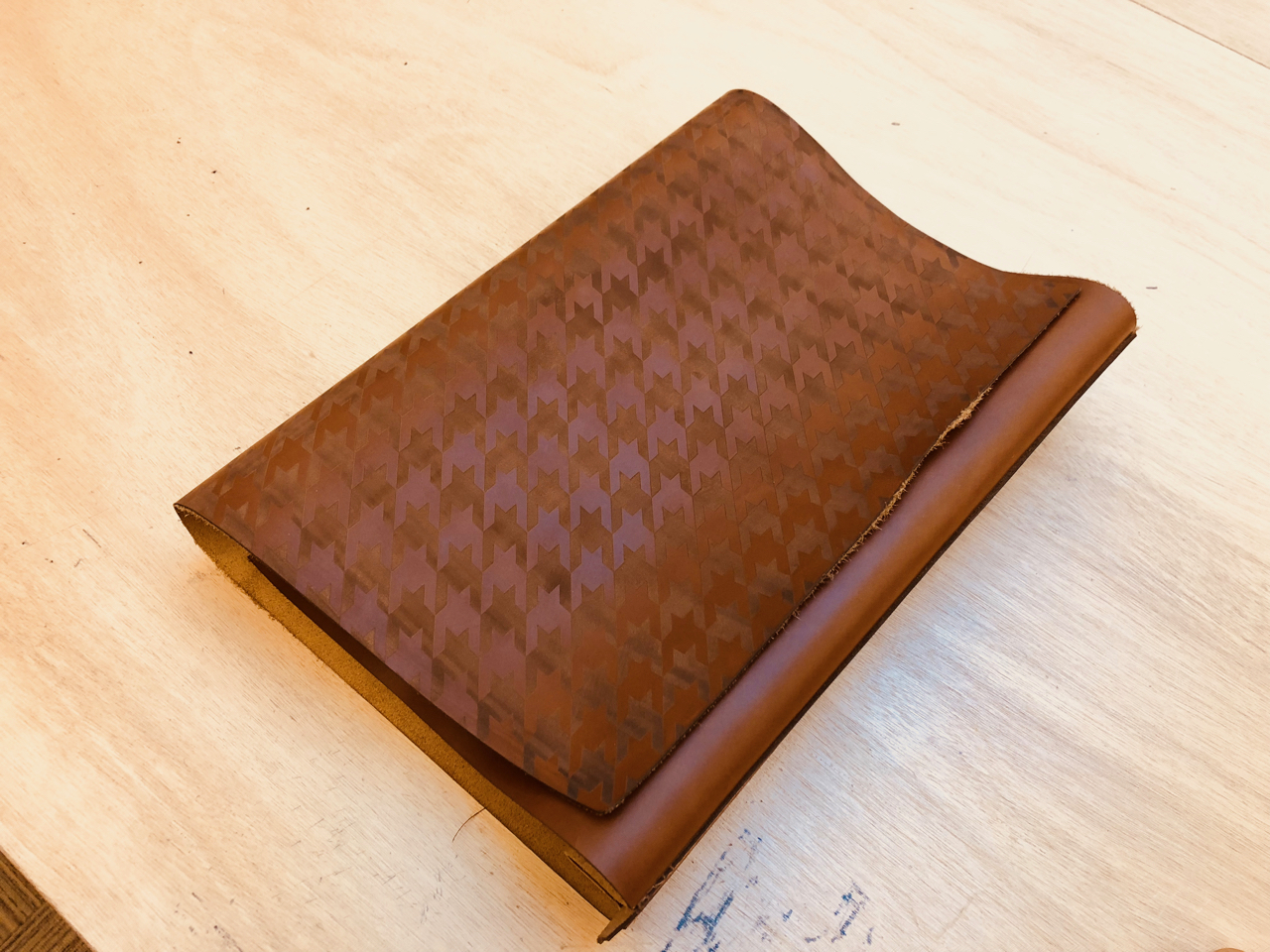
Take a minute to turn your trifold panels over and make sure they fold up nicely.
Mark the End of the Inside Panel
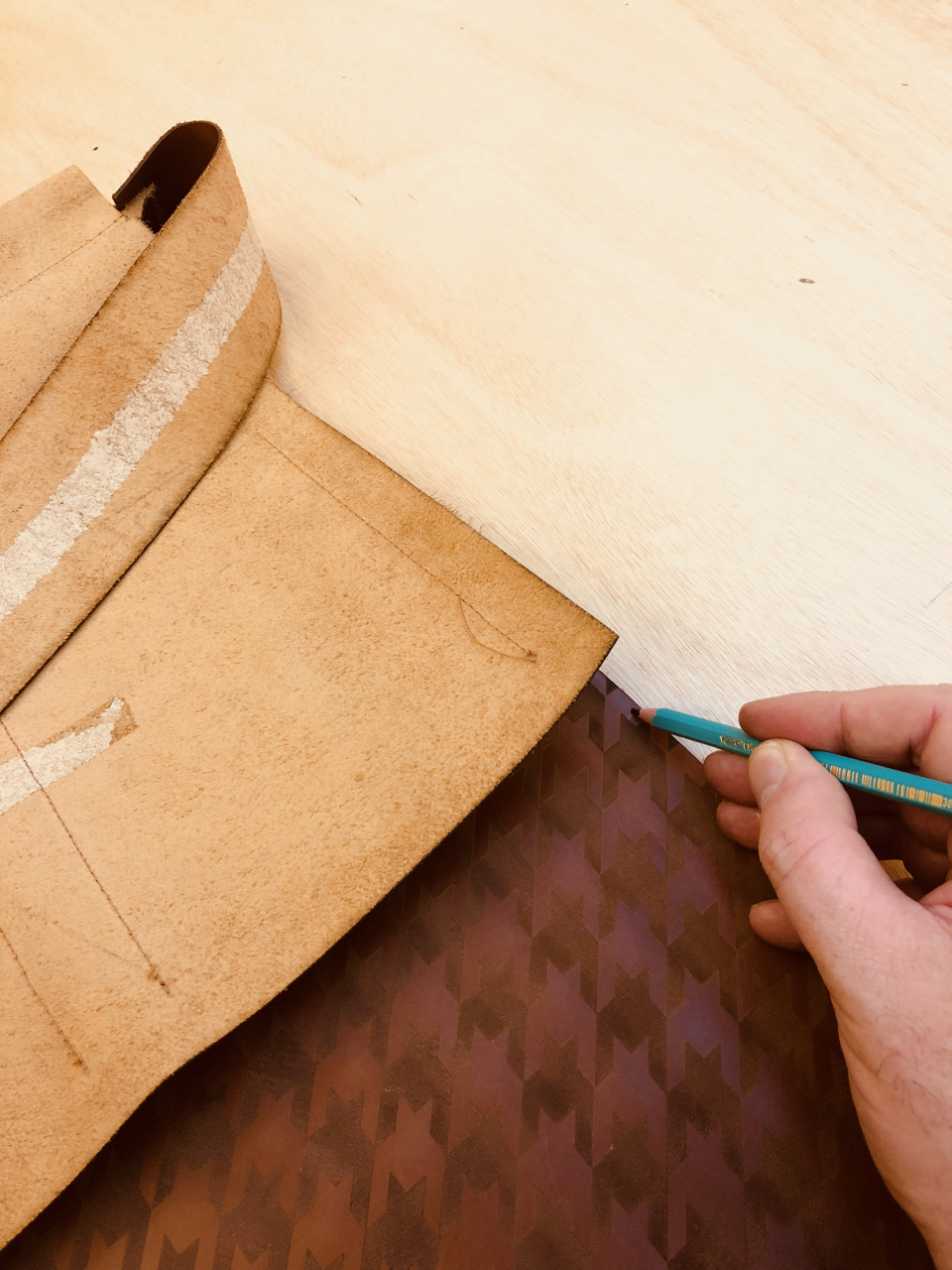
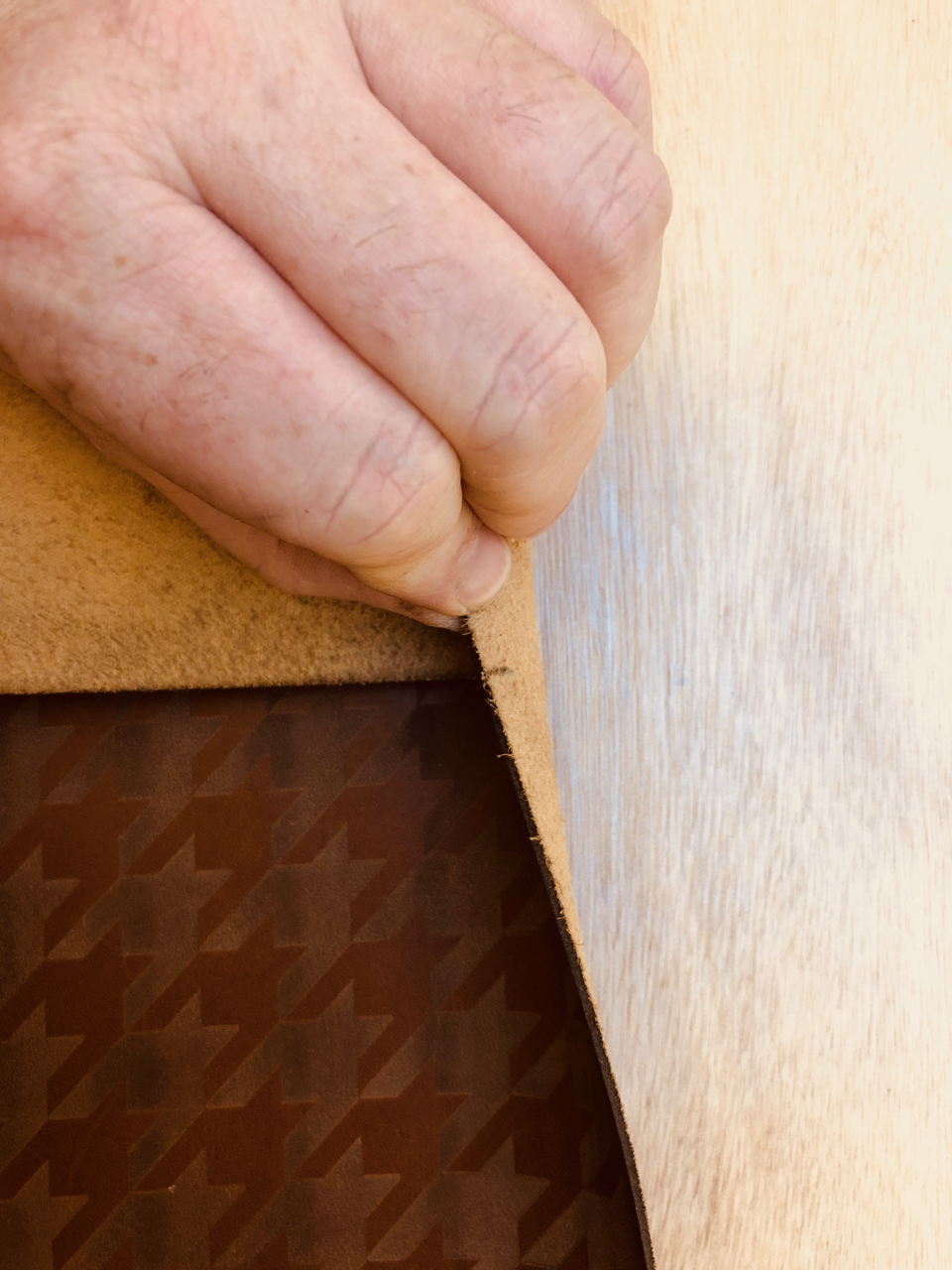
- Fold the inside panel alongside the outside panel and mark where the inside panel ends before we sew the sides.
Side Panels
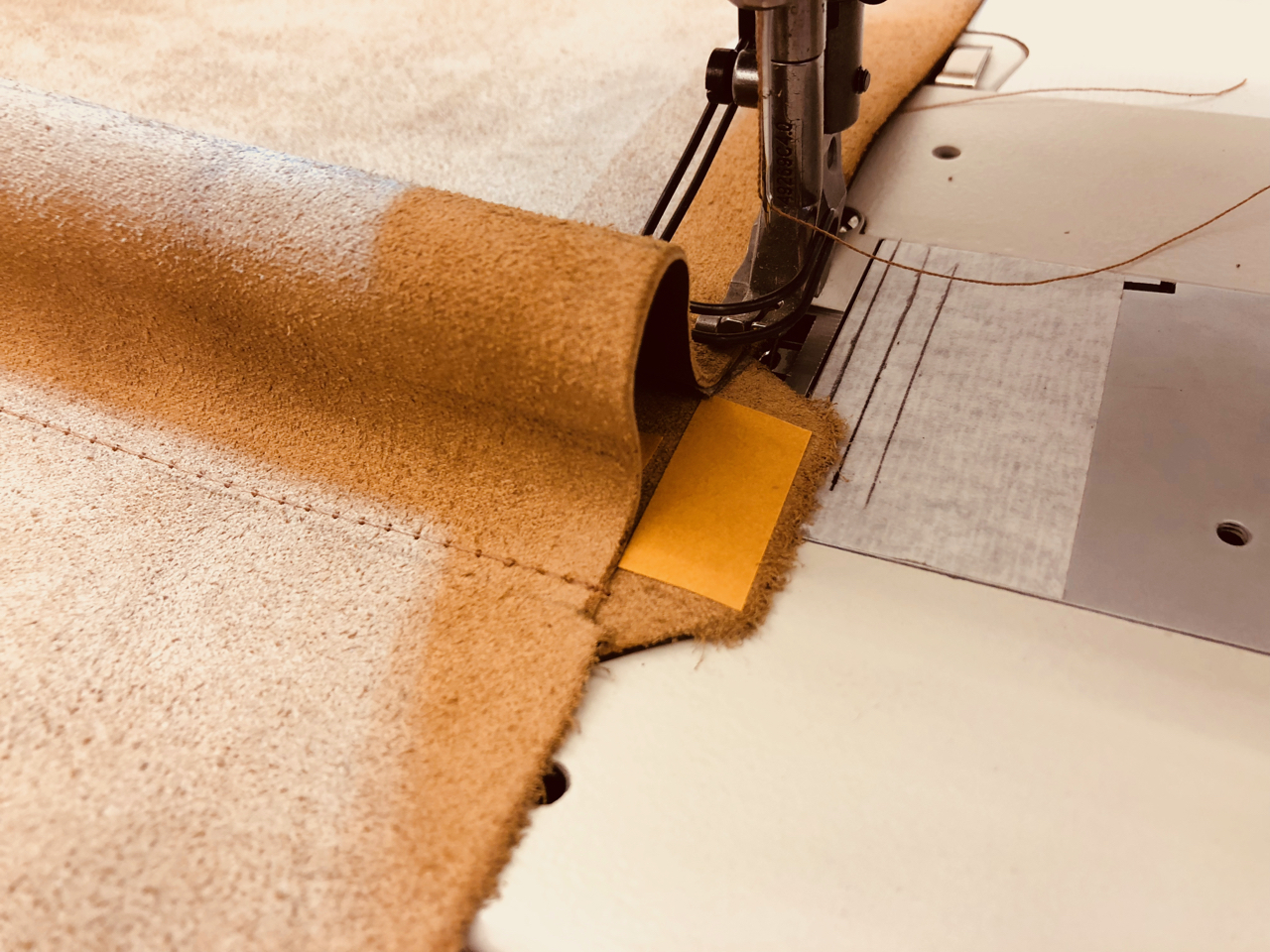
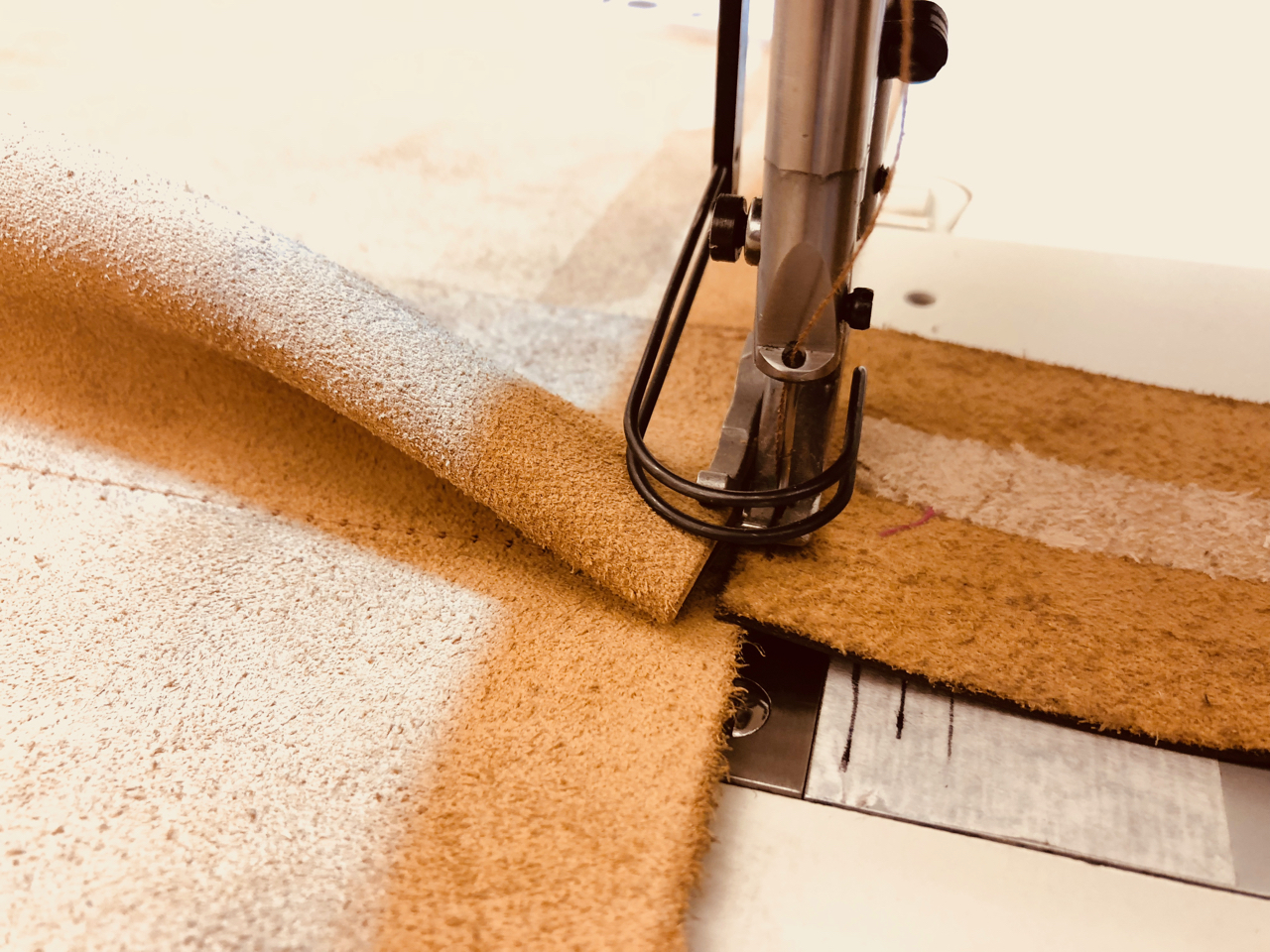
- Add a piece of double stick tape or leather glue to the side panel tab on the outside panel.
Align the side panel in the center of the tab and stitch the side panel to the tab with a 3mm (1/8th in) seam allowance.
Top Stitch the Tab
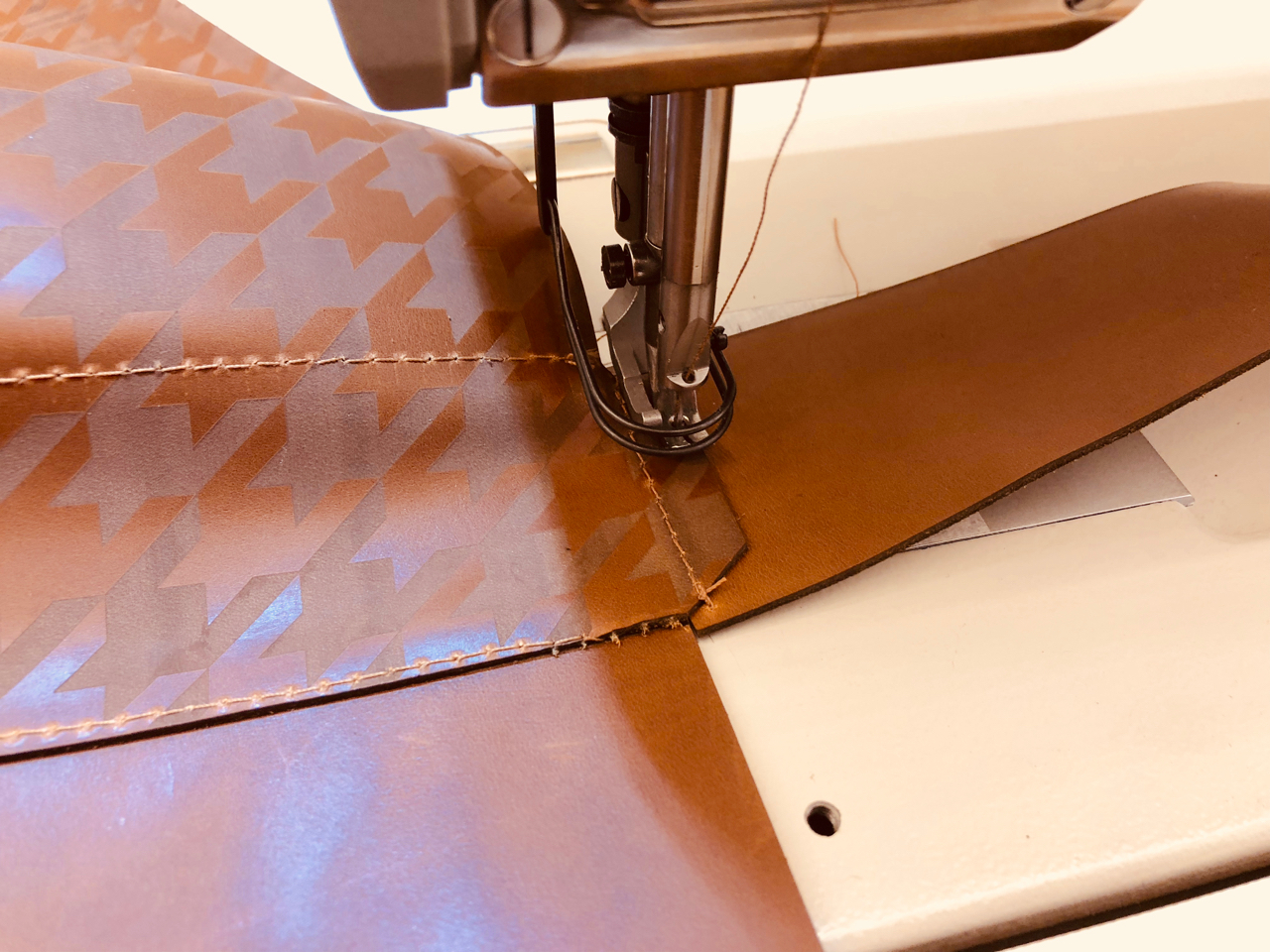
- Turn the bag over and top stitch the top of the tab.
Side Panels to the Inside Panel
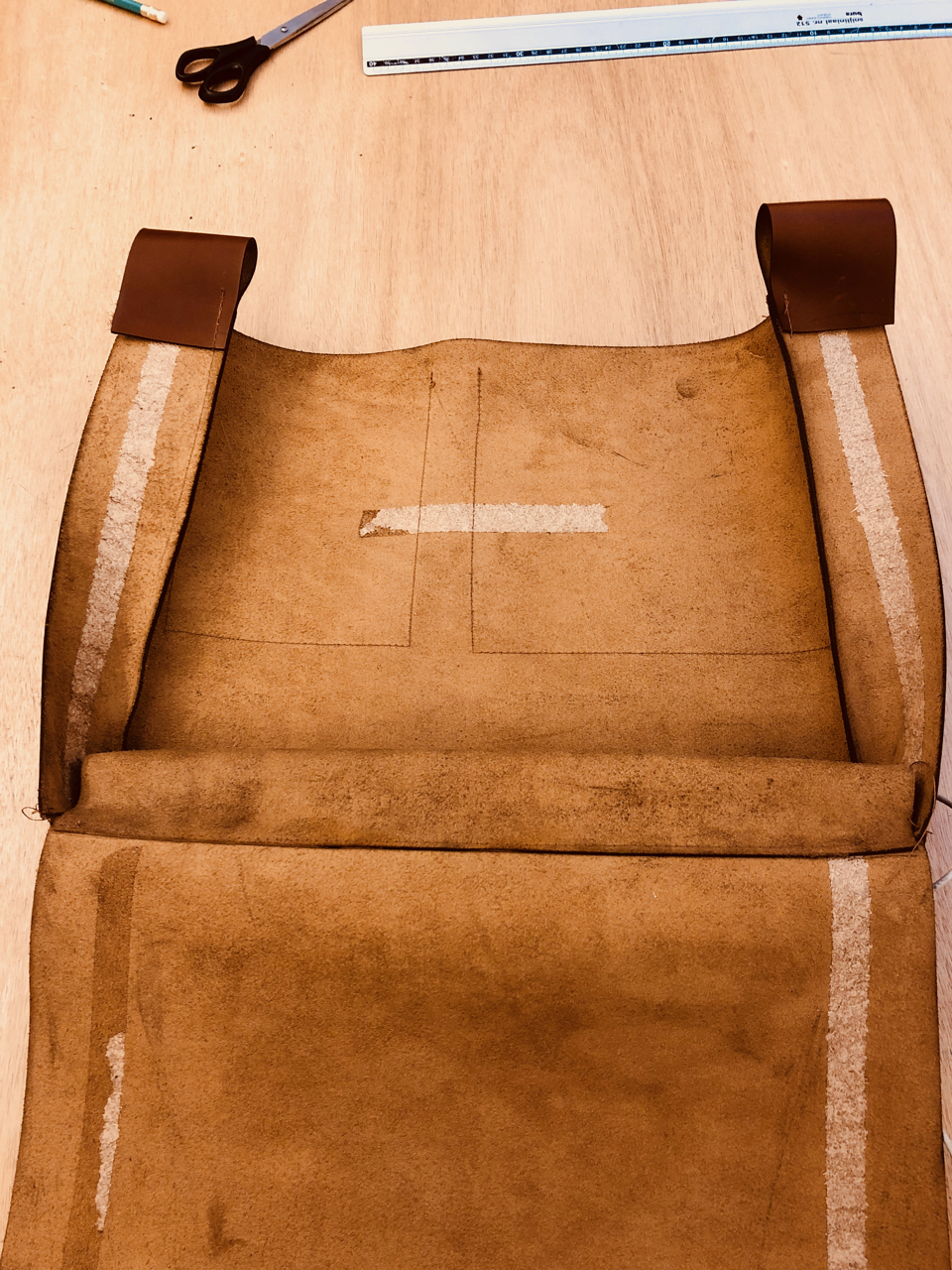
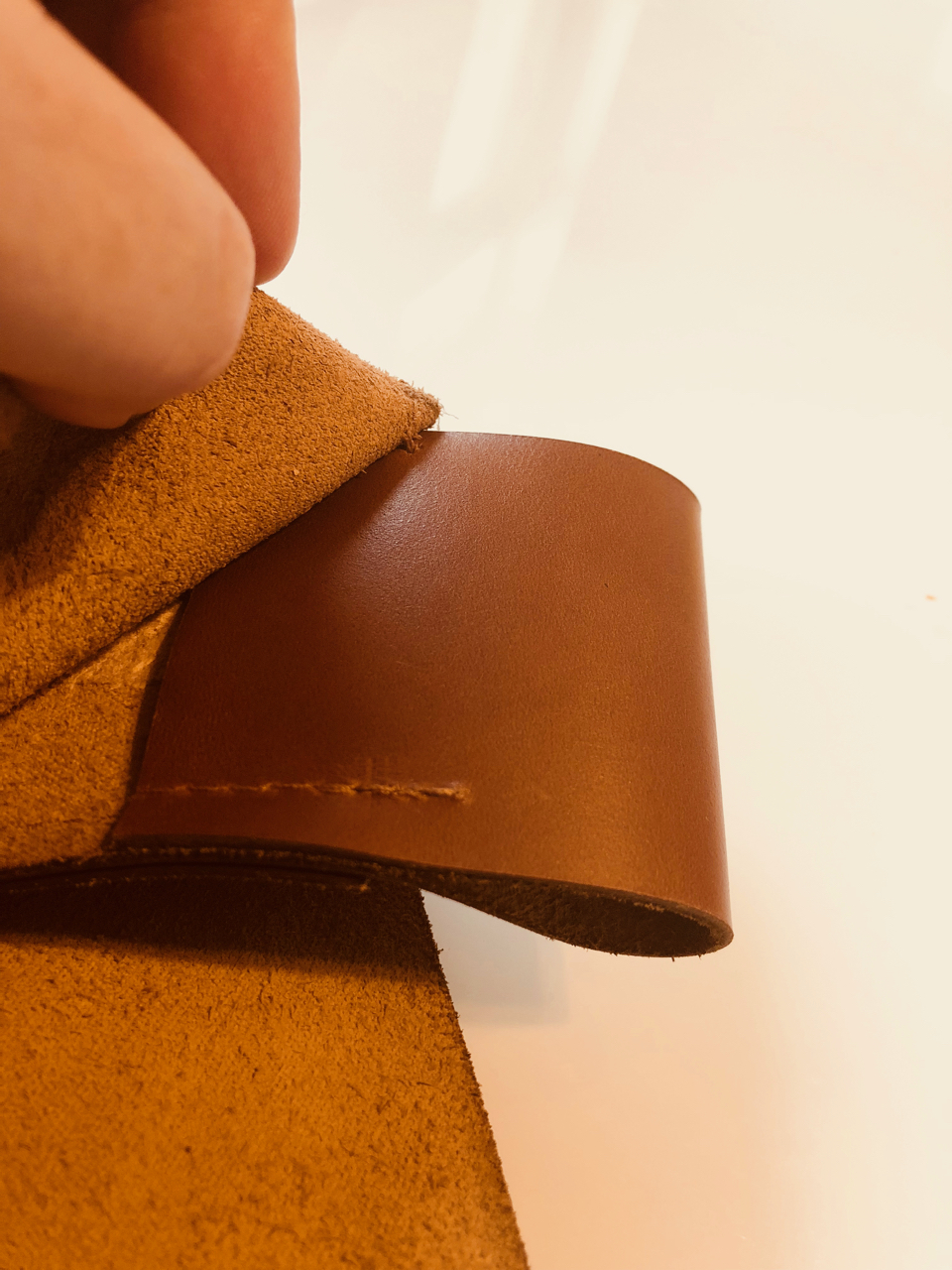
- Align the side panels to the inside panel, face sides together,
- Fold ends over with a 2cm (3/4 in) overlap at the top.
- Stitch the side panels from the bottom towards the top. 3mm (1/8th in) seam allowance. Be sure to backstitch.
Side Panels to Outer Panel
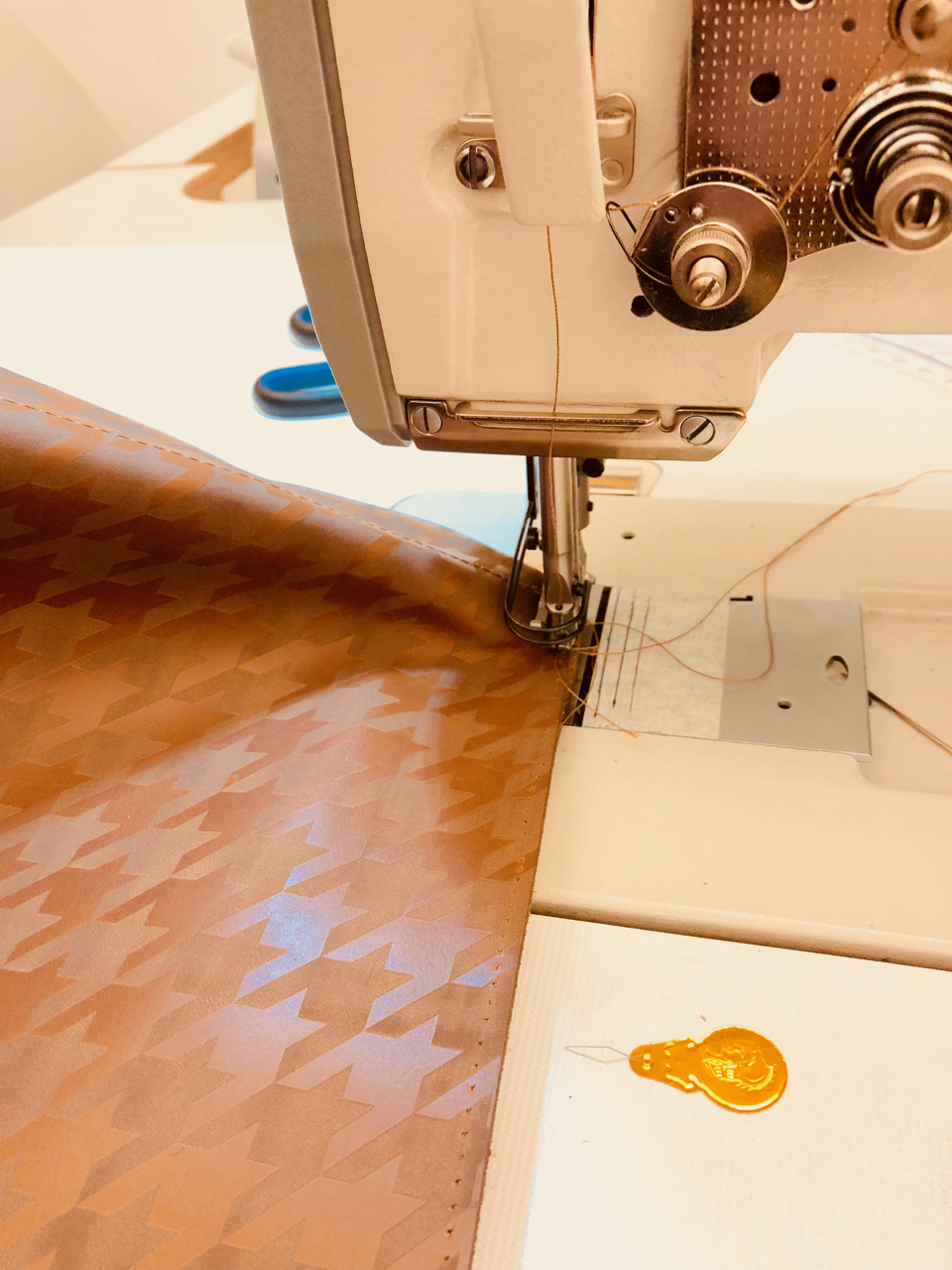
Align the side panels to the outside panel, back sides together,
Align the Folded ends over with the 2cm (3/4 in) overlap at the top.
Stitch the side panels from the bottom towards the top. 3mm (1/8th in) seam allowance.
Be sure to backstitch.
The Bag Is Sewn.
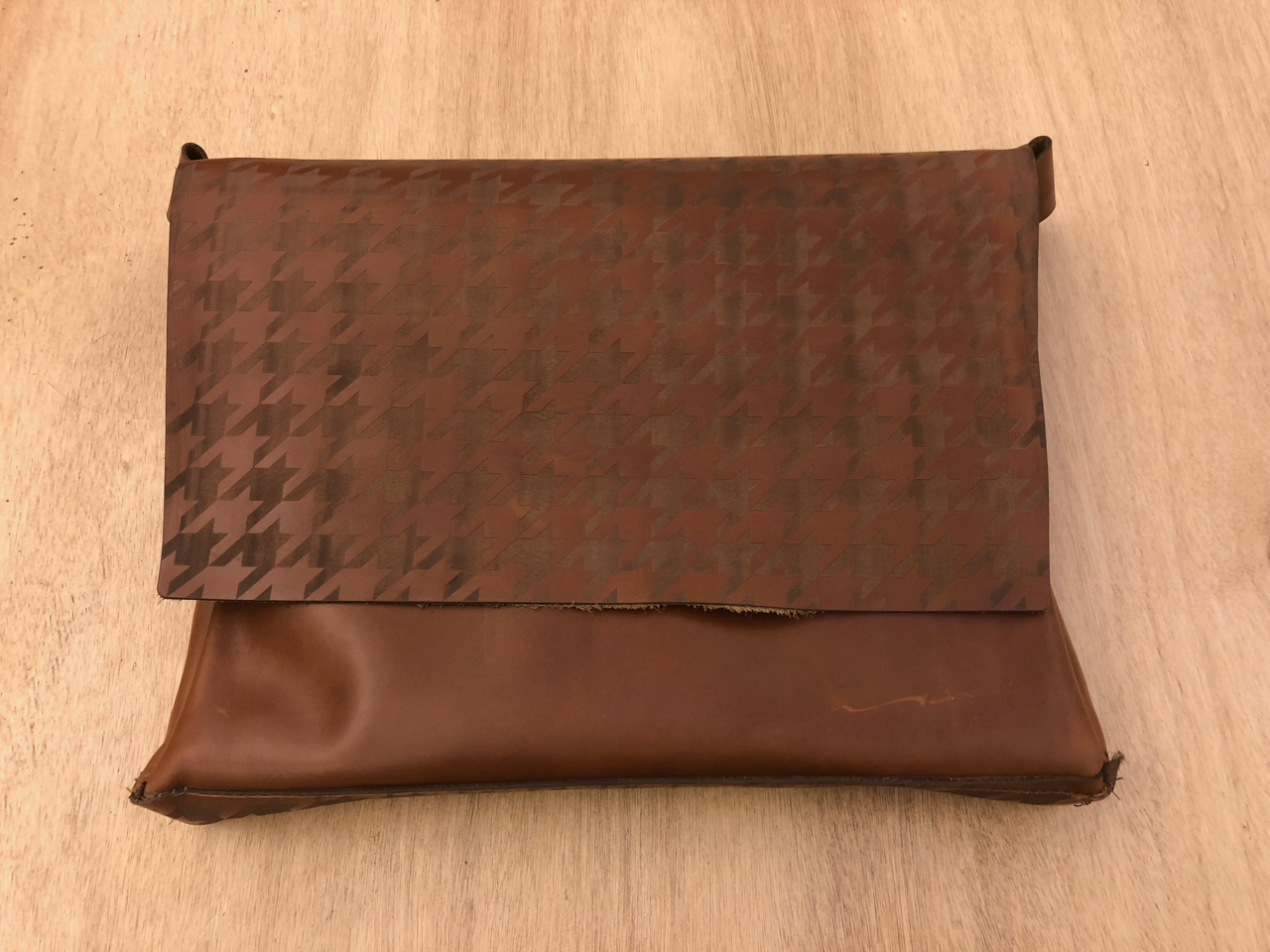
The main body is done.
- The side tabs will pinch the top leather a little bit.
- This helps make sure that the bag stays closed.
Polish the Leather.
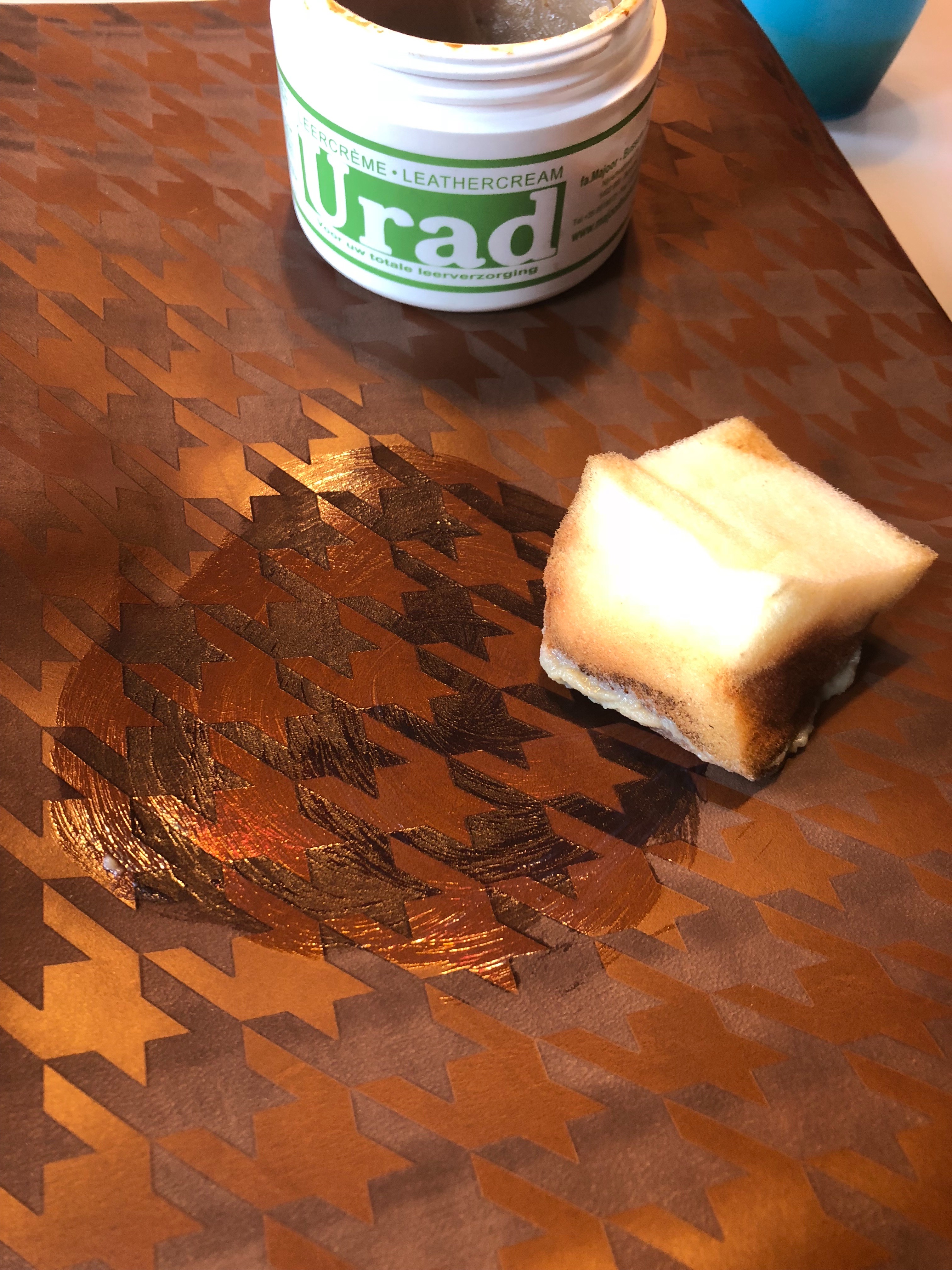
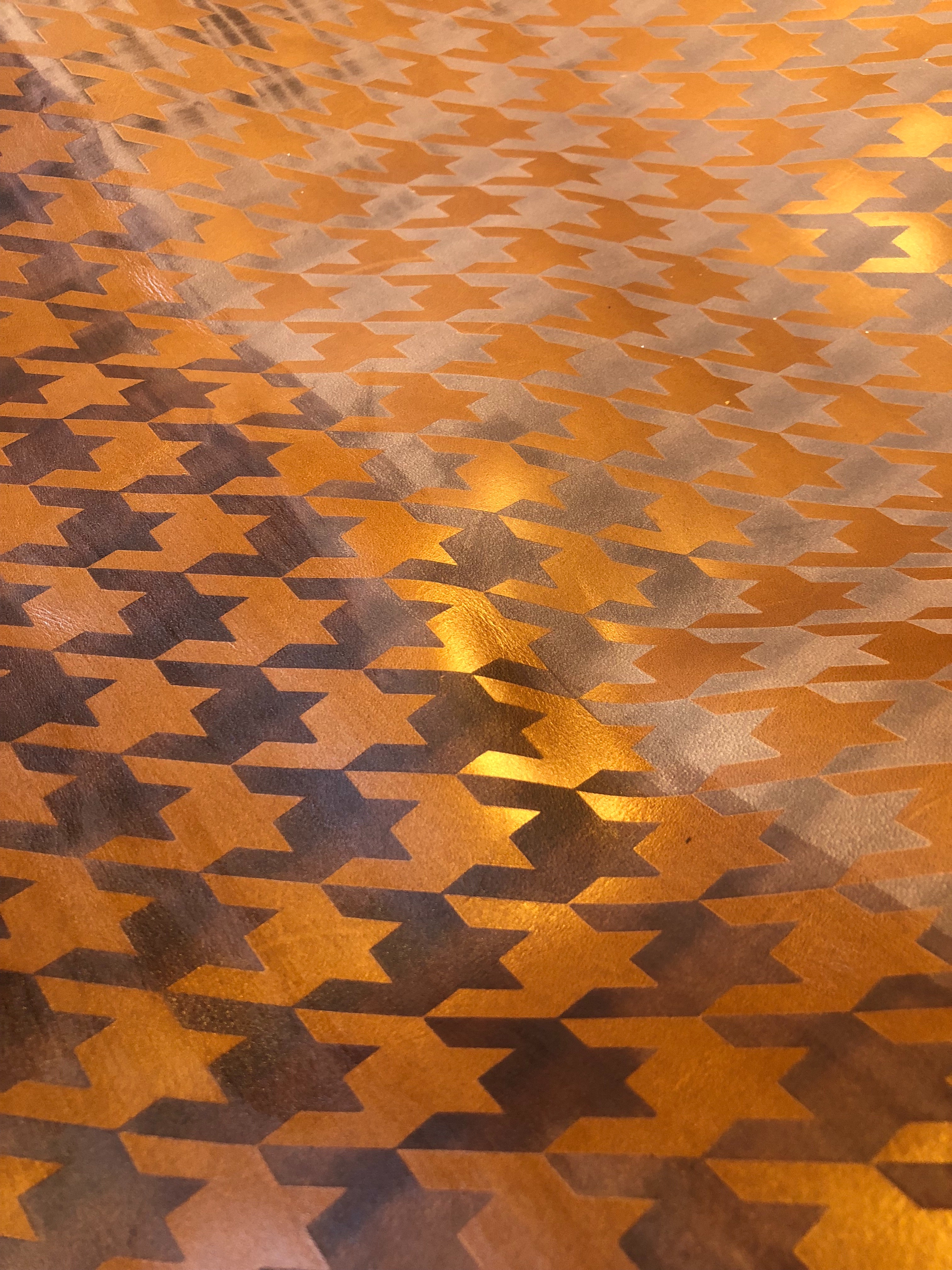
The leather is going to absorb a lot of polish, especially in the damaged areas.
- Make small circles with the polish so that it is absorbed well.
- Note that the color will change dramatically.
(I know it's a tragedy to polish this leather with silicon polish, but I live in the Netherlands where it rains a lot.)
Add a Strap
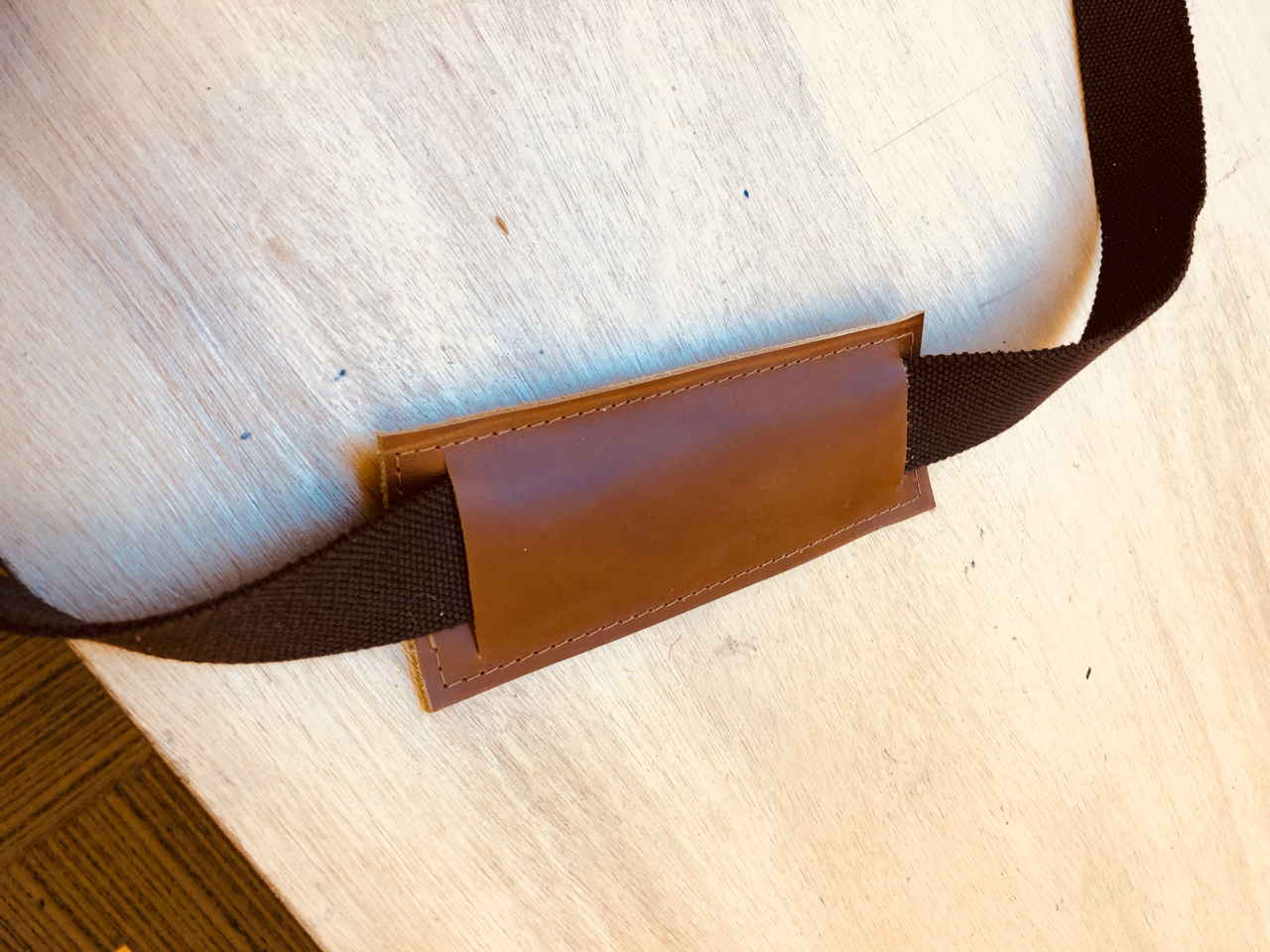
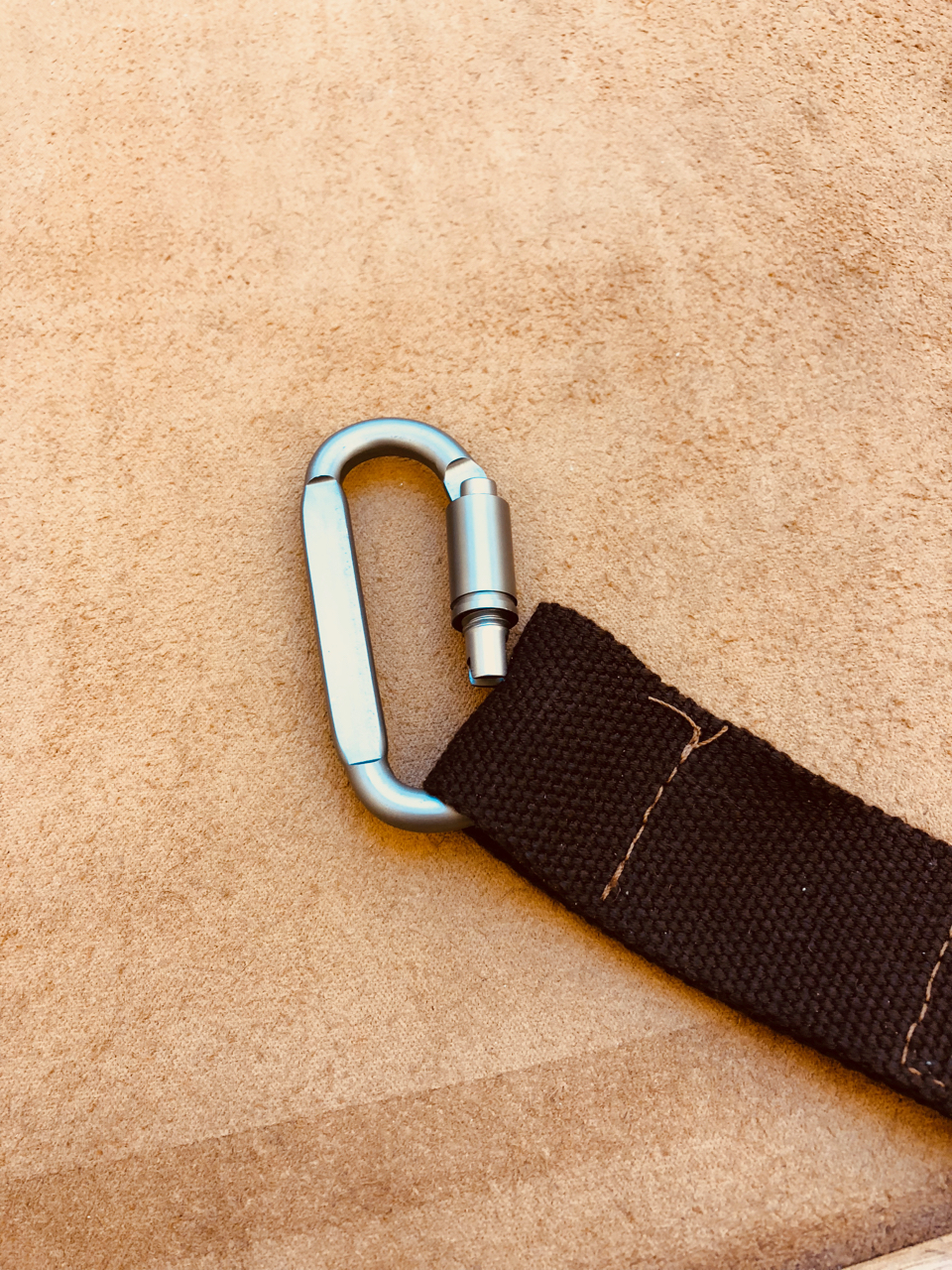
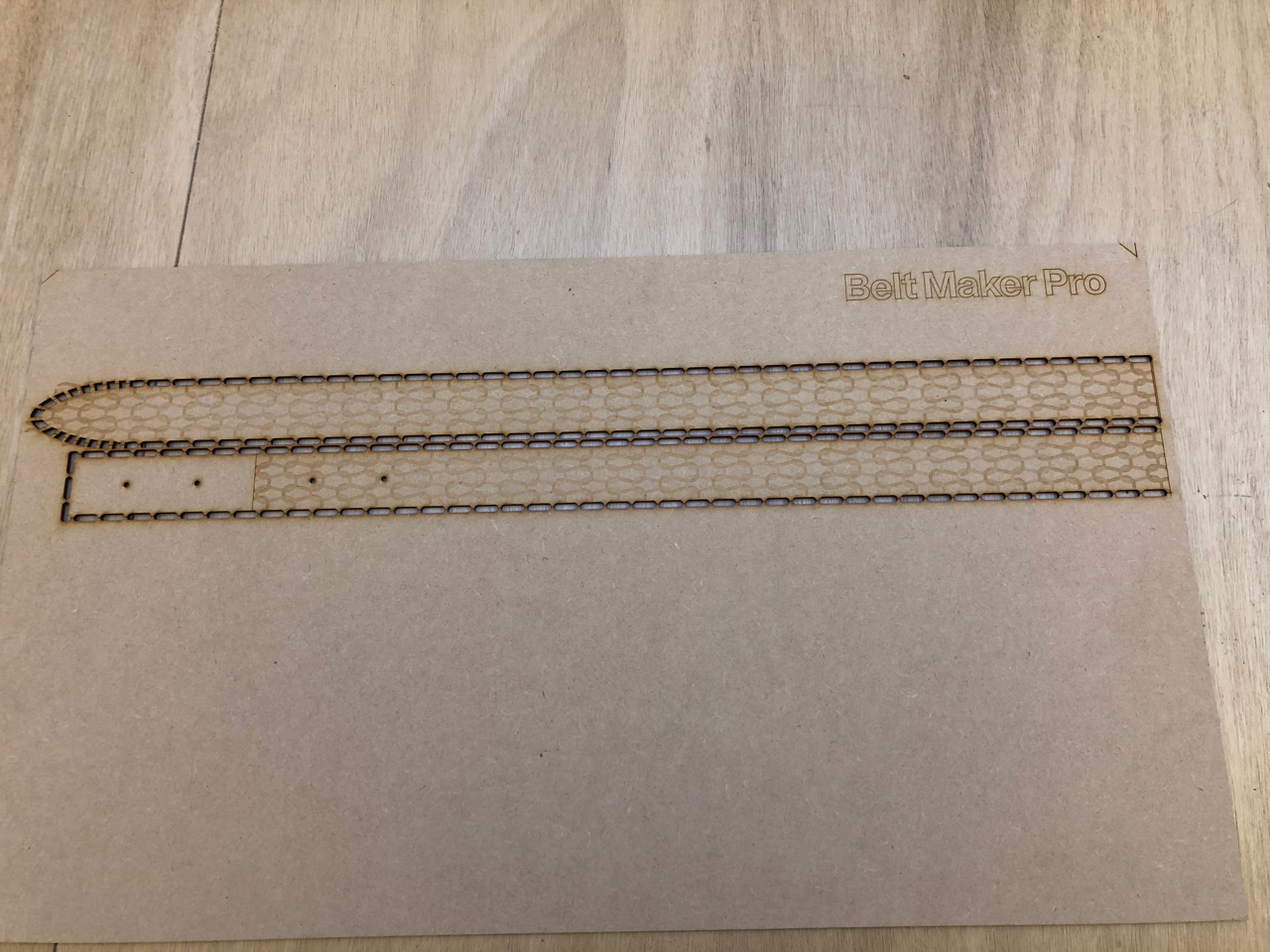
Take 155cm of 40mm strap and stitch a 10cm loop on each end.
50mm carabiners work great as hardware as good hardware is always hard to find.
I also hope to do the following:
- Contour Trimming
- Bezier Support SVG Import
- Individual editing Mode
- More Tessellation Possibilities
Understanding the Math
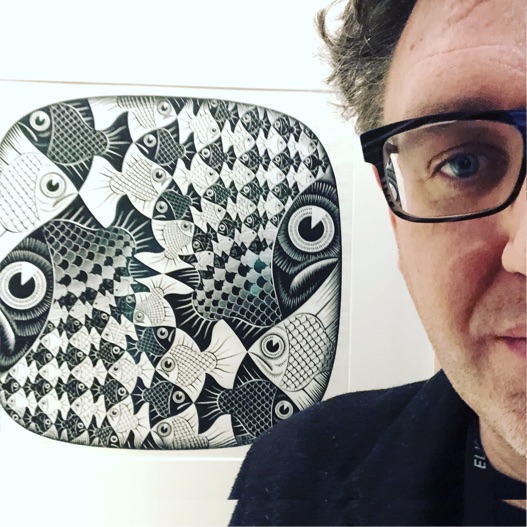

Above image from Jun Hu.
Exploring the math behind these wallpaper patterns is fascinating. Understanding the underlying maths makes the development of these patterns even more fun.
Escher was a master of these patterns and I took the opportunity to see his work at The Escher exhibit at the Pallazo Blu in Pisa this January.
I explored these tessellations further using the oog-processing library by Jun Hu. This library takes a deep look at the 17 wallpaper patterns (28 Tessellations) developed by Heesch and Kinzle in the 1963 book Flächenschluß. The image above is from Jun Hu's processing examples.
In the attached code, congruent tiles are laid down using a pShape object to allow for the visualisation of the tile and how it will lie on the finished bag. The processing sketch found in the next step is designed to explore square or quadrilateral Heesch tessellations.
The Heesch system is easy:
1. Look at your shape like a bathroom tile. How many sides does it have? So far I only do 4 sided shapes in the processing sketch.
2. Moving clockwise around the tile, figure out which kind of symmetry each side has
- (T) Translation aka move: the shape moves around on each side
- (G) Glide + Reflection: The shape flips over.
- (C) Rotation aka. spin, the shapes rotate around a circle
Tessellations are the covering of a surface with reoccurring geometric patterns. There are many ways of achieving tessellations. I started with the TTTT, in order to make a sketch that other fashion designers could appreciate as well. This naturally evolved into two shapes interacting in the TTTT tessellation. These tessellations start in a one dimensional Frieze patterns that show how patterns repeat in a line. The famous mathematician Conway created a great example of how this works.
The tesselations explored here are commonly known as quadrilateral tiles, 11 possibilities exist: TTTT, CCCC, TCTC, C3C3C3C3, C4C4C4C4, C3C3C6C6, CCGG, TGTG, CGCG, G1G1G2G2, and G1G2G1G2.
I created the processing sketch, The Trifold Tessellator, as a way to help fashion designers explore the use of TTTT patterns to make their own trifold computer bag. The software attached is meant as a way for designers to explore how to make patterns while understanding the underlying math. Controls are made to allow the freedom to design patterns while seeing an immediate tessellation.
Thanks to Prof. Loe Feijs, Prof. Jun Hu and Dr. Mathias Funk for the course on Golden Ratio and Generative Arts at the Eindhoven University of Technology.